The Rise Of Anthropocentrism, The Continuity of Colonialism, Bright Green Lies and The Promise Of The Animate Worldview
Exploring the modern day humanocentric wordview, exposing the continuity of colonialism, the lies about 'sustainable' technologies and offering some wisdom from our ancestors for the path ahead
You are intrinsically connected to the living planet that sustains you.
Each time you make a choice that nourishes, respects and enriches her, you are nourishing, respecting and enriching yourself... and each time you make a choice that degrades, harms and pillages her, you are degrading, harming and pillaging yourself.
She is more than just your Earth Mother, for beyond the many gifts that are provided to you by a human mother, the Earth also provides everything you need to live, thrive and experience joy since the moment you are born to the moment you go back to her. She gives you the air you breath, the water you drink, the food you eat, she gave you the calcium that is in your bones and the iron that is in your red blood cells (which flow through your heart, even now).. she shares the indescribable beauty of her art work to nourish your soul and the calming rhythm of her eternal heart beat to let you know you are safe and you are loved.
There were many cultural practices that existed in what we now call “North America” (or Mshike Mnise which means “Turtle Island” in the Anishinaabemowin language) before the Europeans came to claim the land as their own and commit genocide (killing off up to 98% of the local population in some areas). Though there was a great diversity in their cultural practices and belief systems, they all shared several common themes.
Some of these cultures formed democracies (such as the Haudenosaunee Confederacy) others were matriarchal societies but the one through-line that can be observed in the majority of traditional views and spiritual teachings of all of the indigenous cultures of Turtle Island is that they recognized all of our fellow non-human beings on Earth as animate, imbued with a spirit and as persons deserving of our respect and reverence. Also, something that is of critical importance to realize about the difference between the religion and spiritual beliefs that used to guide the people that called this land home, compared to the imported European religion, is that all the various indigenous teachings viewed our non-human fellow beings on Earth as wise elders, from which we had much to learn.
For the most part, Turtle Island inhabitants cultivated relationships with our more than human brethren and sistren. These relationships were based on symbiosis, respect and reciprocity.
With all that being said, I want to emphasize that I think that placing any culture, group of people or individual on some pedestal as pure is unhealthy. I feel we should be vigilant to make sure we are not romanticizing their past nor romanticizing the potential of their worldviews to provide solutions to the present challenges we face.
I would also like to highlight the fact that psychopathy, greed and other anti-social traits are not unique to modern western culture. Unpleasant, selfish (and even sometimes ecologically degenerative) characteristics can be observed (overtly) in the traditions of specific isolated indigenous peoples (some of them were slave trading warlords and others may have respected the forest but were somewhat materialistic coveting ornate possessions).
Other indigenous peoples refused to trade with people that enslaved others and wanted nothing to do with money (as was the case with some of the people (as was the case with some of the people that are described in the this essay, who called the Eastern Woodlands, where I now live, home). Thus, I feel that while no culture is perfect, and some may have lived in a way that expressed more compassion, ethical social structures and holistic thinking than others, one thing is certain, and that is that these starkly contrasted cultures offer us helpful sign posts as we attempt to navigate and forge a path towards a more honest, equitable, kind, abundant and regenerative future.
So, just to be clear, no, I am not saying we should live in mud huts, engage in tribal warfare and/or do animal sacrifice ceremonies (or what ever red herring hypothetical that high tech civilization loving people might throw at me who would accuse me of peddling the “noble savage myth” or something). I acknowledge conflicts and rituals that existed in a small number of indigenous tribes of what is now called North America (and elsewhere). However, I would suggest that we should keep in mind that demonization and dehumanization of the perceived “enemy” or targeted “sub-human class” of an empire is a time tested psychological warfare technique that has been employed in both real time conflicts and retrospectively as “victors write the history books”.
Each one of us can seek to tap into the deep well of place based knowledge that was gathered and honed over centuries to millennia by those who lived close to the land and to the forest before we moved to where we are today. For some of us finding the way into that ancient wellspring of knowledge may require some excavation as centuries or even millennia may have passed since those who lived close with the land and who had reverence for and who gathered the knowledge of the medicine and food plants of that bio region lived there. For me that involves revitalizing Food Forest Design and Polyculture Gardening Techniques which were used here in the Eastern Woodlands centuries ago but it may look different for each of us based on what trees, plants, fungi, climate and topography exist where we live. While I was doing research for my recently published article on working with Birch Trees (in the context of permaculture design and Regenerative Agroforestry) I came across an immense diversity of place based knowledge for how to interact with birch trees rooted in indigenous cultures from modern day Canada, to Scotland/Ireland (my ancestors homeland) all the way to Russia. Each indigenous group had their own unique way to interact with Birch trees in a way that both benefits the forest ecology and offers, medicine, food, tools, art and shelter to humans. For instance, the Evenki people (that once lived in the vast regions of Siberia between Lake Baikal and the Amur River.) used birch for crafts, winter food and created waterproof structures that somewhat resembled what most would think of as a "TeePee" except they were made of Birch Bark.
As stated above no culture was or is perfect so while you embark upon this path of learning with humility also take an honest look at what aspects and ways the ancient people who called the land home where you live are things that no longer serve us and/or should be let go of and allowed to remain as a lesson from the ancestors but not a path which should be walked again. All of our ancient ancestors have place based wisdom to share, knowledge of medicine plants/fungi and all of our ancient ancestors also engaged in some activities and behaviours that are not beneficial and should be left in the past, it is up to each of us to use our own intuition, discernment, research, pattern recognition and critical thinking capacities to distinguish what aspects of ancient cultures should be accepted as gifts only in the form of a lesson/cautionary tale and those aspects that should be accepted as a gift in the form of something that we should strive to breath new life into, revive and build upon to build resilience-and reciprocity in our lives and relationships as well as reverence, humility, practical knowledge and universally applicable wisdom in our perspectives and ethoses.
Permaculture design also involves stacking functions and turning problems into solutions and seeking to research how the ancient people who called the land home where we now live can serve a great many functions. It firstly can hopefully help us get a head start in building our ecological and botanical literacy by tapping into the lists of plants and fungi those people had already studied and experimented with that grow in a particular bioregion and it also invites us to combine humility with discernment to look at ways in which our modern knowledge and techniques could build on and potentiate those more ancient ways if possible. As stated above, another function of this learning process is identifying aspects of how ancient cultures lived that should be released and not revived in present day.
Additionally as that process of learning about ancient and humble ways invites us to unlearn many calcified ego based and often one dimensional or fallacious common modern world views, inviting us to become connected deeply to the place we call home. When we develop a reciprocal relationship to the place where we live and begin to see the earth as our ancient ancestors did, (as our Mother, whom is deserving of respect and whom we should be of service to and give back to for what we take) this allows us to embark on our own unique path to gather place based wisdom. The path to become connected to place with a reciprocal relationship, reverence and humility is the path to embrace indigeneity ourselves (regardless of our skin color).
Now that I have made it clear that I am not putting the indigenous peoples of Turtle Island on some kind of pedestal, let us get back to the story of the rise of anthropocentrism and the promise of the animate worldview.
The year is 1491, the arrival of the imperialistic colonial Christians on the shorrs of Turtle Island brought with them a mentality that starkly contrasted the dominant worldviews of the peoples that lived here. They attempted to push a belief system that has the polar opposite view of the natural world and those non-human beings we share it with. It taught people that we humans should ‘conquer nature’, ‘tame the wilderness’, that we humans are the only blessed and holy beings, the only beings possessing personhood and that we had been given God given right to “have dominion over” all our fellow beings (and use them for our own selfish needs and preferences). In essence, the imported European religion brought with it a humanocentric and hubristic worldview.
After the dehumanization and genocide of most of the indigenous peoples, the corporate profiteering began to push forward full steam ahead, transforming that which was living, diverse and abundant, into commodities, monocultures and cattle farms.
One pertinent historical example (of many) which took place in North America was the intentional extermination of the vast majority of Buffalo that once roamed (and nourished) these lands. It was achieved via combination of US government degrees, orders given by bloodthirsty military commanders, bounty put up by railroad barons (from the Union Pacific Railroad and Canadian Pacific Railway ) the actions of many degenerate settlers that worked in concert to exterminate most of the Buffalo in North America.
Indigenous tribes in North America developed a symbiotic relationship with the bison. For hundreds (perhaps thousands of years) the indigenous peoples of what is now the US used controlled burns of brush and coppicing techniques to thin forests and regenerate the lush grasses that give the animals a habitat. The Indigenous peoples of Turtle Island did this with foresight and careful planning, slightly altering the trajectory of the massive migratory herds of Buffalo over the years by selectively regenerating their grazing habitat to better suit their needs and also accelerate the regeneration of the land. In return, the bison provided them with food, which could be kept over time (in formats such as “Pemmican”), shelter, in the form of tipi covers, clothes and fire, among other tools for daily life.
The United States government (and the oligarchs that stand behind and above it) wanted the land of the Indigenous peoples of Turtle Island and saw how connected they were to the Buffalo and thus encouraged the slaughter of the buffalo as a strategy to conquer the American plains “Indians”.
Generals William T. Sherman and Philip Sheridan believed if the soldiers could eradicate the Buffalo, the “Indians” would have no choice but to give up. This belief stemmed from General Sherman’s tactic during the Civil War to defeat the Confederates in his March to the Sea—the “scorched earth” policy. Take away anything essential for the survival of a people, and they will surrender—as long as the Buffalo roamed the Plains, so did the Indigenous peoples of Turtle Island—the two were symbiotic.
American General Phil Sheridan said, “Let them kill the buffalo until they are exterminated. Then your prairies can be covered with speckled cattle and the festive cowboy.. ..Kill every buffalo you can! Every buffalo dead is an Indian gone.”
For more information: https://nativephilanthropy.candid.org/events/annihilation-of-buffalo-by-military-and-hunters/
On 26 June 1869, the Army-Navy Journal reported that General Sherman remarked, “the quickest way to compel the Indians to settle down to civilized life was to send ten regiments of soldiers to the plains, with orders to shoot buffaloes until they became too scarce to support the redskins.”
Sherman told Grant the year before, “we must act with vindictive earnestness against the Sioux, even to their extermination, men, women and children.” When Grant assumed the presidency in 1869, he appointed Sherman Commanding General of the Army, and Sherman was responsible for U.S. engagement in the “Indian Wars” (aka Buffalo War).
For more information : https://nativephilanthropy.candid.org/events/buffalo-kills-and-genocide/
Sheridan was soon able to mount the kind of offensive he desired. In the Winter Campaign of 1868-69 against Cheyenne encampments, Sheridan set about destroying the Indians’ food, shelter and livestock with overwhelming force, leaving women and children at the mercy of the Army and “Indian” warriors little choice but to surrender or risk starvation.
Many Indigenous scholars demonstrate the interrelation of Plains Indigenous Nations and bison herds, sometimes referred to as buffalo.
For example, Cree scientist Keira Ladner studied the non-hierarchical organization of Blackfoot communities and practices of collaborative decision-making. “These community practices are rooted in close relationships to bison herds, which work as non-coercive collectives in which no single animal dominates.”
The imperialistic Statists and oligarchs of the railroad companies could not allow for such a way of life to continue, for not only did they want to steal the land, but these indigenous peoples were standing as an example of an alternative way of organizing society, standing in direct opposition to their self-proclaimed “civilized” statist societal structure. Thus, the Buffalo were hunted down and exterminated and the vast majority of the indigenous peoples were massacred, enslaved and/or imprisoned on little parcels of land where the government could attempt to slowly brainwash them over multiple generations.
At the close of the 18th century, there were between 30 and 60 million baffalo on the continent. By the time of this photograph ( https://archive.org/details/buffalo-slaughter ), that population was reduced to only 300 – 400 wild bison left.
In massive and majestic herds, they once rumbled by the hundreds of thousands, creating the sound that earned them the nickname “Thunder of the Plains.”
The bison’s lifespan of 25 years, rapid reproduction and resiliency in their environment enabled the species to flourish.
These huge beings were not just a source of food, tools, clothing and cultural sustenance for the Indigenous humans of the land, they served extremely important ecological roles in creating habitat for other organisms and building soil.
Bison made the Prairies hospitable for many other communities. Each skull in the image linked above represents one 1,500-pound (600-kilogram) animal — bison are the largest land mammals in North America. Bison are not just massive in size, they are also a keystone species in the West, meaning they have a dramatic influence on an ecosystem. If one of these species disappears, no other species can fill its ecological role, and the whole ecosystem changes as a result.
The skulls in the photograph above do not just represent the loss of bison, but the disruption of an entire ecosystem. It represents not only the intentional starvation of indigenous humans, but also the starvation of countless other beings that were symbiotically connected to the bison herds. Each bison killed meant the end of grazing, wallowing and migrating practices that make the land hospitable for other species.
For example, hundreds of species of insects live in bison dung, providing food for birds, turtles and bats. When bison roll in dirt, they create depressions called wallows, which fill with spring rain and provide homes for tadpoles and frogs. Without the presence of bison, habitats and food for these and many other species disappear.
As described above, many Indigenous peoples of Turtle Island were dependent on the buffalo for survival. With the demise of the buffalo, the American “Indian’s” life evolved into economic dependence on the U.S. government. The statists had largely succeeded in their stated goal of genocide, enslavement and assimilation, mission accomplished.
While this piece of history illuminates the depravity, arrogance and malice (which all humans are capable of if they allow themselves to be guided by greed, hubris, fear and ego) it can also offer us some wisdom for solutions and hope for reversing the damage if we learn from our elder species and choose to work along side of them.
Buffalo are natural land restoration machines – when allowed to move freely, they instinctively don’t overgraze, they move through areas tilling the soil with their cleft hooves (providing aeration and opportunities for plants to grow without destroying the networks of beneficial insects and fungi in the soil as mechanized tilling does), distributing grass and other native seeds, and fertilizing (building soil) everywhere they go.
Species like Buffalo can serve as agents of Trophic Cascade and send out ripple effects that regenerate soils and entire ecosystems if we allow them to roam freely. Wild Buffalo can play a key role in restoring the tall grass prairie, restoring the watersheds, restoring the birds, insects and soil (Dr. Lyla June explores this further in the video linked below).
So the buffalo were exterminated, large areas of the continent were deforested and mass genocide was committed so that the colonizers could steal the land from indigenous peoples (for greed) but that is all behind us now, right? Wrong.
I have friends with heritage rooted in several different First Nation cultures. Some are old enough where they remember when the government agents and RCMP came for them and their siblings to kidnap them and drag them off to to the residential "schools". https://ehprnh2mwo3.exactdn.com/wp-content/uploads/2021/01/Survivors_Speak_English_Web.pdf Some eluded their would be captors and had to live a life on the run as young adults, some were not so lucky and the stories they tell me about the atrocities that were perpetrated upon innocent children there (in Government sponsored facilities run by priests and nuns) are so disturbing that hearing them would bring tears to your eyes and make you sick to your stomach. Tourture and Mass murder of innocent children took place in those facilities all over Canada. These facilities were engaging in the forced sterilization of indigenous girls up until the year 2000 in some provinces.
When the mass graves at the residential schools became too conspicuous to sweep under the rug our government denounced the facilities (which they created and funded for decades) and apologized. Surely this means our governments are finally respecting the human rights and sovereign lands of the indigenous peoples of Canada right? Nope! Wrong, again.
When Vancouver got the Olympic bid for the 2010 winter Olympics (a modern day “Circus Maximus” that exudes Anthropocentrism and hubris) the statist bureaucrats in Canada immediately began planning how they would steal more of unceded lands of indigenous peoples and pillaging the Earth in order to build the Olympic facilities and event grounds.
As early as 2007, indigenous people, the poor, the homeless and those who live on the land were experiencing the ripple effects of the imperialistic colonialism of the Olympic Games. The vast destruction of mountains, old growth forests, streams, hunting and fishing grounds and delicate ecosystems in which are relied on by Indigenous people; the closures of social housing and low income hotels; the high and increasing rate of homelessness; and the criminalization of Indigenous people and the poor are all part of the lead up to the 2010 Olympics.
Indigenous communities in the interior and the coast of British Columbia including the Secwepemc people of Skelkwek’welt, the St’at’imc of Sutikalh, the Pilalt of Cheam along with people from all colors and creeds were resisting the objectives and activities of the 2010 Olympics since 2003.
Those who stood up to defend their lands were criminalized by the Canadian state. There were hundreds of arrests of Indigenous people (with an emphasis on Indigenous youth and Elders) who protested Olympics 2010 and its objectives.
The Vancouver government appointed the Vancouver Olympic Committee to organize and plan the Winter Games. The Vancouver Olympic Committee, the British Columbian government, and the Canadian government began planning to build the venues for the games. After choosing the venue locations, the International Olympic Committee realized that the land belonged to indigenous people, and was in fact un-ceded land. Un-ceded indigenous land can be classified as land that is not under the protection of a signed treaty, but requires the permission of the First Nations government before being developed. This decision was not released to the public, and construction started without the permission of the First Nations peoples. This outraged First Nations groups in British Columbia, Canada, prompting them to start the campaign known as “No Olympics on Stolen Native Land”.
In response the Vancouver Organizing Committee for the Olympic Games (VANOC) allocated $175 million dollars of tax payer money to militarize RCMP units to crush any resistance (they ended up spending over $400 million by 2008 and by the end of February 2009, it was finally acknowledged that the security bill would be over a billion dollars). Much of the security planning was driven by threat assessments conducted by the Integrated Threat Assessment Centre, a branch of the Canadian Security Intelligence Service (or CSIS which is Canada’s version of the FBI).
What were those tax dollars used for? Well to crush dissenting voices and silence indigenous elders who spoke out about their land being stolen (so that fancy Olympic athletes could prance around on stages for camera crews) of course!
The militarized police units set up designated “free speech zones” in Whistler and Vancouver (which were chain link fenced in areas out of sight from the main events) and were the only places that people were allowed to protest. When they refused to be hidden away in ‘protest pens’ and protested near olympic events, police brutality ensued. This resulted in several deaths, including the death of indigenous elder Harriet Nahanee, aged 71, after being sent to jail. She died because she was sent to Surrey Pretrial Centre, a prison for men and a noted hell-hole for women in poor health.

Needless to say, over a billion dollars worth of tax payer money later (spent on militarized police units to crush and silence dissent) the olympic corporations marched onward to steal their land, pillage the sea to sky corridor and set up their modern day Circus Maximus (built on the stolen lands of indigenous peoples and tainted by the blood of their peaceful elders that dared to ask that their traditional lands and the wildlife that lived there be respected).
For more info on the corrupt and degenerative corporate Olympic industry see:
“THE OLYMPIC INDUSTRY: MYTH AND REALITY” : https://web.archive.org/web/20211031161826/http://vancouver.mediacoop.ca/sites/mediacoop.ca/files2/mc/anti-2010_booklet.pdf
and "The International Indigenous Network Statement “No Olympics on Stolen Unceded Native Land”: https://web.archive.org/web/20190907165009/https://noii-van.resist.ca/indigenous-support/no-olympics-on-stolen-native-land/
Next up in the seemingly perpetual expressions of Corporate colonialism (assisted by corrupt governments and police) the year is 2013. This time the Canadian government and their corporate bosses want to pillage the Mi'kmaq lands in New Brunswick by building a Petroleum Fracking operation.
When the indigenous peoples refused to hand over their land to the Fracking corporations, RCMP were again militarized to crush dissent and clear the way for more colonial theft.
The Canadian military also used its counter-intelligence unit to monitor the Mi’kmaq Warrior Society-led anti-fracking camp.
Peaceful protests were attacked when the Royal Canadian Mounted Police (RCMP) brought in snipers dressed in camouflage and armored riot police who attacked protesters with pepper spray, physically assaulting those who stood in the way of violations of treaty rights and the destruction of their land.
The image below is an artists rendition of an actual photograph of those events.
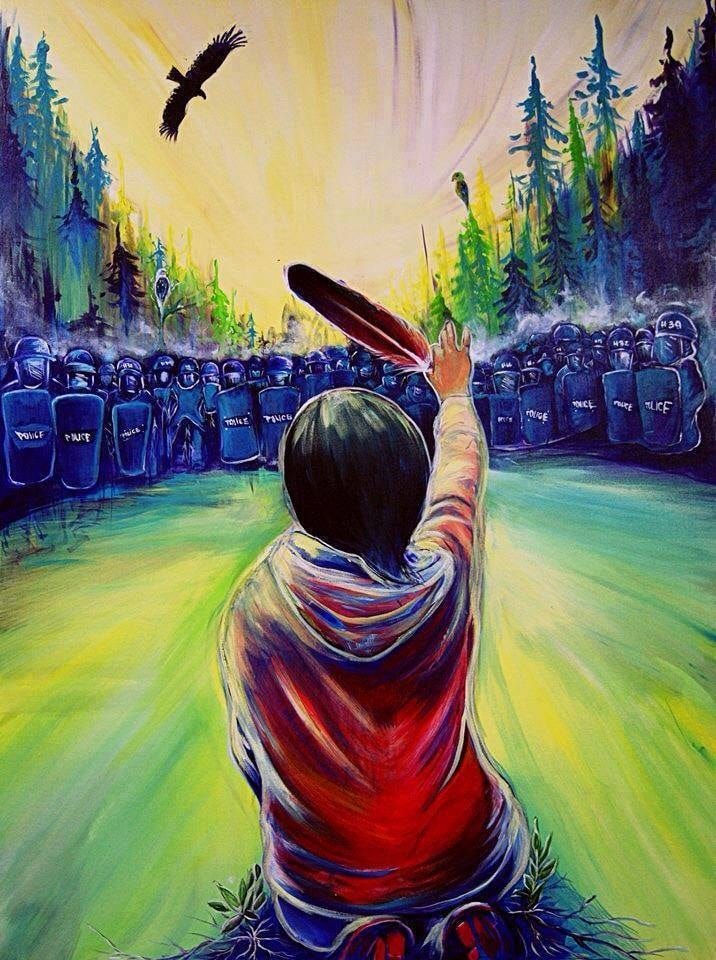
For more information about the colonial imperialism that has been imposed on the Mi'kmaq peoples for over 300 years: https://web.archive.org/web/20131024005224/http://www.mediacoop.ca/story/elsipogtog-clashes-300-years-making/19357
Fast forward 3 years and the colonial frontlines moved southward, where an attack on indigenous lands and the body of Mother Earth took shape in the form of the Dakota Access Pipeline. People from many indigenous tribes and all walks of life came together to protest and protect the sacred waters.
The Standing Rock Sioux Tribe and protesters said the oil pipeline, crossing beneath the Missouri and Mississippi Rivers, would pose a grave threat to drinking water on the reservation and beyond.
During the resistance to the pipeline, Indigenous peoples were tear-gassed, bit by attack dogs, shot with rubber bullets, sprayed with water cannons (in below-freezing temperatures), and arrested by authorities.
Nahko, who lived at the Oceti Sakowin Camp in September and December, saw — and felt — it all.
He wrote the following song to speak to his experiences protesting and standing up to colonialism in an attempt to prevent the destruction of Mother Earth’s body:
(I also recommend you listen to this song by the same artist as well as this song. )
For additional information on activism centered around indigenous peoples that aim to inspire others to take a deeper role in protecting and preserving our planet, people, and the spirit in all of creation: https://www.nahko.com/activism
For many years I have told people who champion electric cars and solar panels that considering they also rely on finite resources, we should be careful that we do not end up going from trading blood for oil, to trading blood for lithium.
It appears that, sadly, that is exactly what we are doing now in South America, Australia and soon in northern Ontario/Quebec (and in the Cobalt Mines in the Congo, that are also required to make the batteries).
Over 50 percent of the world’s known lithium deposits are in the “Lithium Triangle”—the lithium concentrated brine sources in Argentina, Bolivia, and Chile. Bolivia’s high mountain deserts—the Salar de Uyuni—have by far the largest known reserves of lithium.
Evo Morales -- Bolivia's first indigenous president, had a commitment to the environment and to Pachamama (Mother Earth) and he was against inviting in transnational corporations (like Telsa and it's lithium mining partners) to pillage the land for lithium.
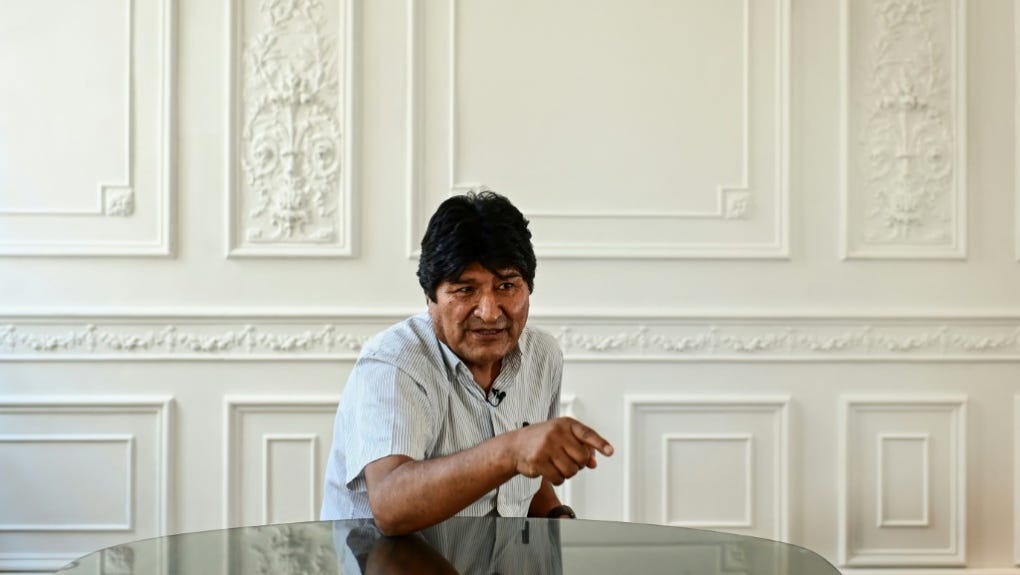
When he refused to allow multi-national corporations to pillage the Earth for the large lithium deposits in his country it was not long before a US-backed military coup took place.
President Evo Morales Ayma, was removed illegally from his office in November 2019. The Bolivian military, at the behest of Bolivian oligarchs with ties to Lithium Mining Corporations and the United States government, threatened Morales; Morales went into exile in Mexico and then in Argentina.
The CEO of the U.S.-based Telsa car manufacturer has admitted to involvement in what President Morales has referred to as a “Lithium Coup.”
“We will coup whoever we want! Deal with it.” was Elon Musk’s response to an accusation on twitter that the U.S. government organized a coup against President Evo Morales, so that Musk could obtain Bolivia’s lithium.
The coup was about Bolivian lithium; and not only did it involve violent coercion to remove Bolivia's first indigenous president from office, it also resulted in two massacres local people defending their land against the lithium mines (and now is resulting in the destruction of the land and ecosystems there).
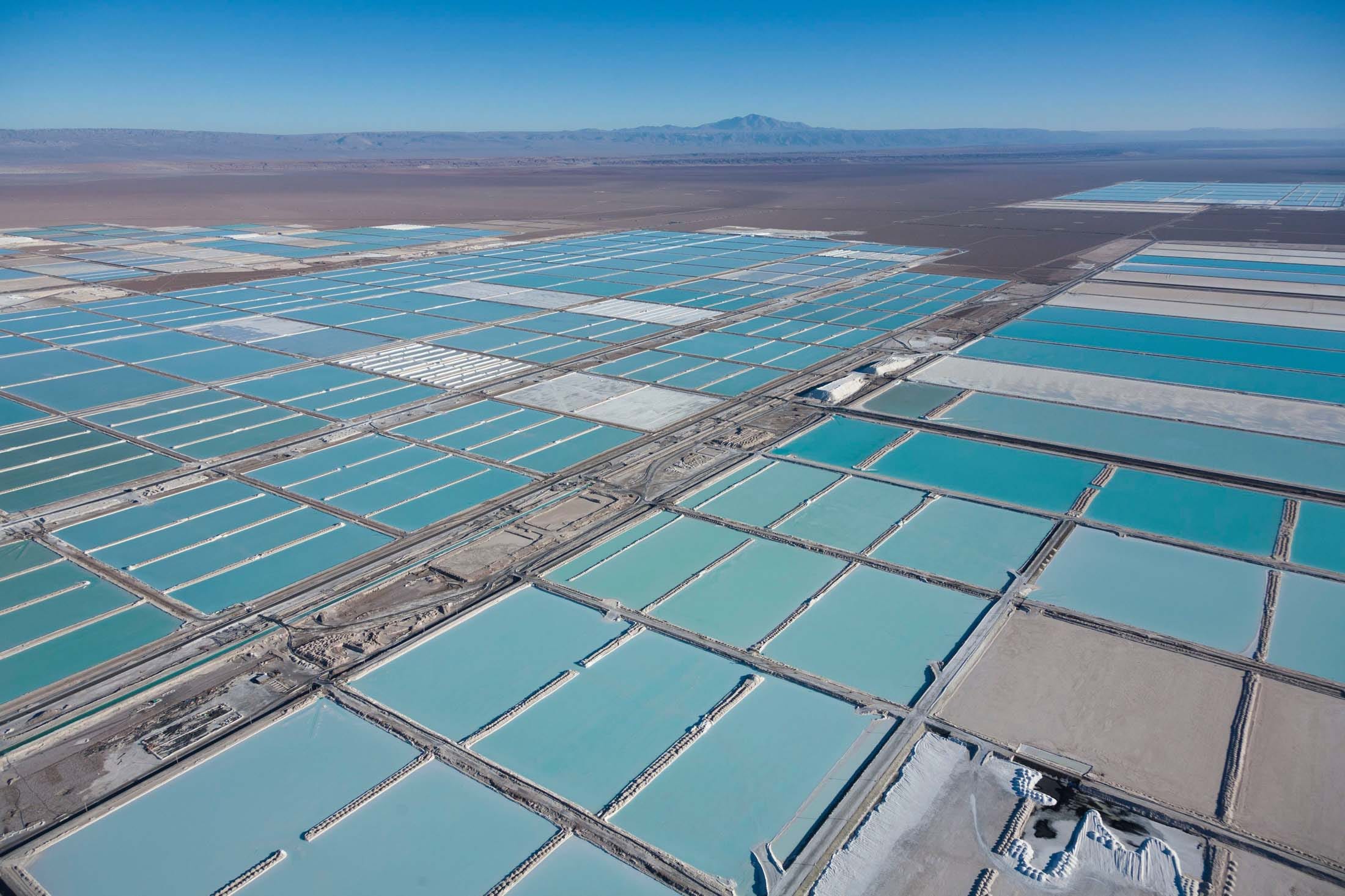
This is what "sustainable development", Greenwashing, "Green Colonialism" and trading blood for lithium looks like.
The corporate oligarchs that are ravenous to make billions from pillaging the Earth for lithium and cobalt now have their crosshairs set on Ontario and Quebec, God help anyone that dares to stand in their way to defend the Boreal Forest (which they intend to scalp, grind into rubble and poison so we can have ipads and EVs). (more on this later in the article).
For more information on the Lithium Coup in Bolivia:
https://socialistproject.ca/2020/07/elon-musk-overthrow-of-democracy-in-bolivia/
https://mronline.org/2020/11/13/evo-morales-lithium-was-the-reason-for-the-coup-in-bolivia/
Now we move forward in exploring the continuity of colonialism to the years 2020.
The blood thirsty corporations and their statist friends continued their colonial pillaging northward in 2019-2020 when the Canadian government and corporations (TC Energy (formerly TransCanada) / Coastal GasLink’s) initiated a violent invasion into the Unceded territory of the Wet'suwet'en Nation.
Militarized RCMP were again sent in to act as enforcers for corporations, assaulting and arresting peaceful indigenous people to make the way for the bulldozers to annihilate the land. The national police force frequently sends members of a specialized division with a reputation of using excessive force against peaceful protestors. Known as the Community-Industry Response Group, or C-IRG, the roving unit draws RCMP officers from far-flung areas of Canada to break up protest camps that form in opposition to fracking operations, pipelines, strip mining projects and old growth logging operations. These are corporate mercenaries with fancy titles, nothing more.

Many brave satyagrahi are still (even now) resisting the imperialistic fascistic conquest and pillaging of Mother Earth and theft of the Unceded sovereign territory of the Wet'suwet'en Nation.
For more information on the current situation :
Wet'suwet'en Explained: https://www.theindigenousfoundation.org/articles/wetsuweten-explained
MILITARIZATION OF WET’SUWET’EN LANDS
AND CANADA’S ONGOING VIOLATIONS: https://static1.squarespace.com/static/5c51ebf73e2d0957ca117eb5/t/620058664c6ee459921ddd70/1644189799141/Expert+Mechanism+on+the+Rights+of+Indigenous+Peoples+Wet%27suwet%27en+Submission+Jan+2022.pdf
These are just a few examples from the past and not isolated incidents. I could go on and on (providing you examples from all over the world) but it hurts to just expose what I have already in this article and I think you get the idea what of what has been happening. The reason I outlined this unbroken line of “The Continuity of Colonialism” is to dispel the comforting fallacy that some modern day Canadians and Americans tell themselves that says “ya the government, corporations, military and corrupt police did bad things to indigenous peoples in the past, but that was a long time ago and things are different now”.
No, things are not different now, the Colonialism never stopped, it just changed gears, it put on a mask and now it is enforced by judges, government edicts, propoganda and corrupt police acting as corporate enforcers (instead of army soldiers massacring villages to make the way for railroads and giving First Nation women and children small pox infected blankets).
Now here we are present day. Colonialism has taken on new forms such as the colonization of the minds of people of all colors and creeds through governments and corporations using social media and AI Chat bots as a weapon or colonization of the genetic fabric of life (through biopiracy racketeering operations that use corrupt laws to patent seeds and other organisms and synthetic mRNA injections that contaminate the human genome) yet in many ways its ravenous lust to steal the lands of indigenous peoples and pillage the body of the Earth remains the same yet it is presented with new slogans such as “sustainable development” and “renewable energy”.
South of where we live the corporate colonizers (and their friends in government) have their crosshairs set on the traditional territory of the Walker River Paiute, the Agai-Dicutta Numa, and other bands of the Northern Paiute where they intend on pillaging the land with the Rhyolite Ridge open-pit lithium mine in Nevada.
For more information:
“Three Native American tribes have filed a new lawsuit against the Federal Government over Lithium Nevada Corporation’s planned Thacker Pass lithium mine, the latest move in what has become a two-year struggle over mining, greenwashing, and sacred land in northern Nevada” : https://dgrnewsservice.org/civilization/ecocide/extraction/new-lawsuit-challenging-thacker-pass-lithium-mine-press-release/?fbclid=IwAR3B30si1lsXvKpNVOm_uykFf4hFp6cqeVFhCd_XEUzTmvLxjYCc_h2xD3A
- https://www.facebook.com/watch/?v=227963552112053
This is habitat for Tiehm's buckwheat, cholla cactus, sagebrush, rabbitbrush, prairie falcon, desert bighorn sheep, pronghorn antelope, jackrabbit, ring-tailed cat, and literally hundreds of other species.
At the present time, large scale 'Green Colonialism' and ecological devastation is planned for northern Ontario and Quebec.
Our corrupt corporation captured government is helping to initiate large projects to pillage the lands of indigenous peoples (Cree of Eeyou Istchee, the Shakopaatikoong peoples of the Slate Falls first nation and the Waabitigweyaang peoples of Sandy Lake, among others ) and the body of Mother Earth in new Cobalt, Tantalum and Lithium mines in northern Ontario and Quebec.
The Boreal Forest and the body of our Mother Earth is being assaulted in northern Ontario and Quebec. Over 217,000 Hectares of forest, lakes and rivers have been purchased by lithium mining corporations that intend to set up open pit mines in northern Ontario and Quebec.
Hard rock lithium mining involves deforestation, draining lakes and rivers, blowing the land into pieces with explosives, carving deep gashes into the Earth with giant machines, using truckloads of industrial solvents like sulfuric acid (resulting in water contamination with toxic sludge) dragging that processed rubble to processing facilities with fleets of heavy machinery then processing the ore with extremely high energy furnaces using another slew of toxic chemicals (which further contaminate the water table, lakes, rivers and ocean elsewhere).
To extract one ton of lithium, you need to contaminate approximately 500,000 gallons of water. Lithium mining also destroys the soil structure and leads to unsustainable water table reduction. In the end, it depletes water resources, leaving the land too dry and exposing ecosystems to the risk of extinction.
The long term results are water loss, ground destabilisation, biodiversity loss, increased salinity of rivers, contaminated soil, massive co-2 emissions and toxic waste. Some of the most common lithium mining wastes are sulfuric acid discharge and the radioactive uranium byproduct (which leaches into the ground water, streams, rivers and lakes). They can cause various forms of cancer and diseases. The mining also presents other serious problems like large amounts of lime and magnesium wastes.
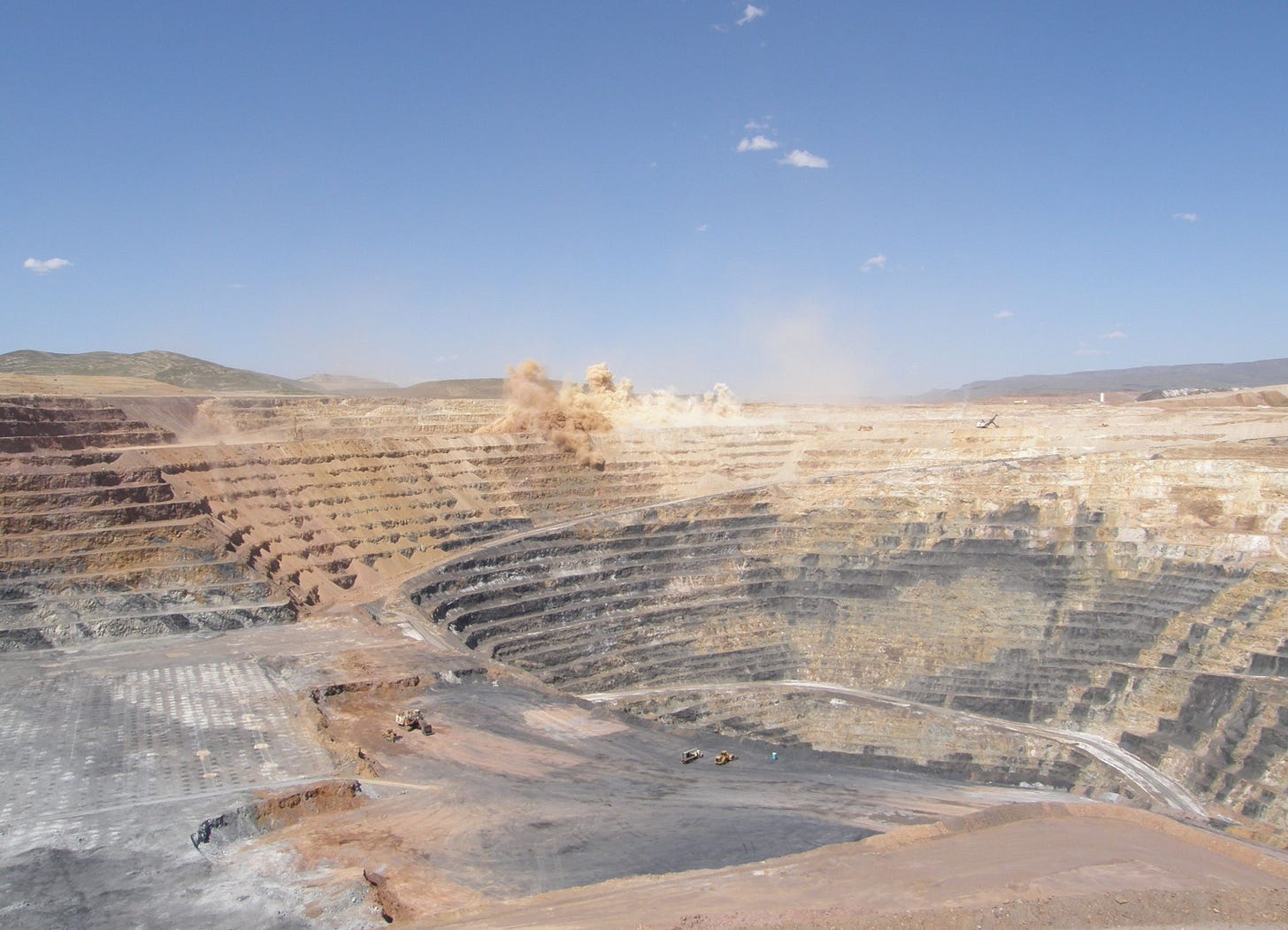
As Lithium extraction causes surface water contamination, it also destroys other water sources. So, it’s also responsible for the creation of toxic rain. The water cycle largely depends on the limited forests. The trees extract underground water and release it into the atmosphere for this process to continue. Therefore, lithium mining hinders the water cycle from providing adequate rainfall in the affected areas. The impacts are severe. The long term result will be increased regional droughts, soil erosion and the risk of desertification.
The boreal forest is teeming with life (containing about two thirds of Canada's 140 000 species of plants, animals, and micro-organisms.) To describe it, let's begin with the trees that make up the forest canopy. There are about 20 species of them (including but not limited to Spruce, fir, pine, and tamarack, trembling aspen, balsam poplar, birch and more). The boreal plays a critical role in how the planet breathes through the process of photosynthesis. By extension, it also shapes the composition of the atmosphere, which today includes maintaining 21 percent of the life supporting concentrations of oxygen in our atmosphere. The impact of the forest is so significant that global levels of carbon dioxide, actually drop significantly in spring and summer when it is growing most.
For those concerned about carbon levels in the atmosphere, preserving the integrity of the Boreal Forest should be a top priority. The boreal forest soaks up more carbon than it emits. The boreal is also cold. Thus, when trees die, they decompose slowly, keeping carbon in their bodies relatively longer than dead trees in tropical forests, which rot swiftly and release large amounts of carbon. The cold also keeps the boreal’s permafrost frozen, trapping carbon-rich methane, underneath the surface of the soil. As well, much of the boreal is dotted with marshy peatland, another efficient storage facility for carbon.
The boreal forest shelters more than 85 species of mammals, including some of the largest and most majestic—wood bison, elk, moose, woodland caribou, grizzly and black bears, and wolves—and smaller species, such as beavers, snowshoe hares, Canada lynx, red squirrels, lemmings, and voles.
Nearly half of the birds in North America rely on the boreal forest at some time during the year. It is estimated that at least 3 billion landbirds, water birds, and shorebirds breed in the boreal forest each year, representing more than 300 species. Another 300 million birds, including several species of shorebirds, swans, and geese, breed farther north and travel through the boreal forest during migration. It is estimated that 32 000 insect species inhabit Canada's boreal forest, although about one third of these species have yet to be described. Canada's boreal forest is home to about 130 species of fish (including minnows, stickleback and Larger species such as including walleye, northern pike, lake trout, Arctic grayling, yellow perch, brook trout, whitefish and burbot).
It is worth re-iterating that Hard rock lithium mining involves deforestation, draining lakes and rivers, blowing the land into pieces with explosives, carving deep gashes into the Earth with giant machines, using truckloads of industrial solvents like sulfuric acid (resulting in water contamination with toxic sludge) dragging that processed rubble to processing facilities with fleets of heavy machinery then processing the ore with extremely high energy demanding furnaces using another slew of toxic chemicals (which further contaminate the water table, lakes, rivers and ocean elsewhere).
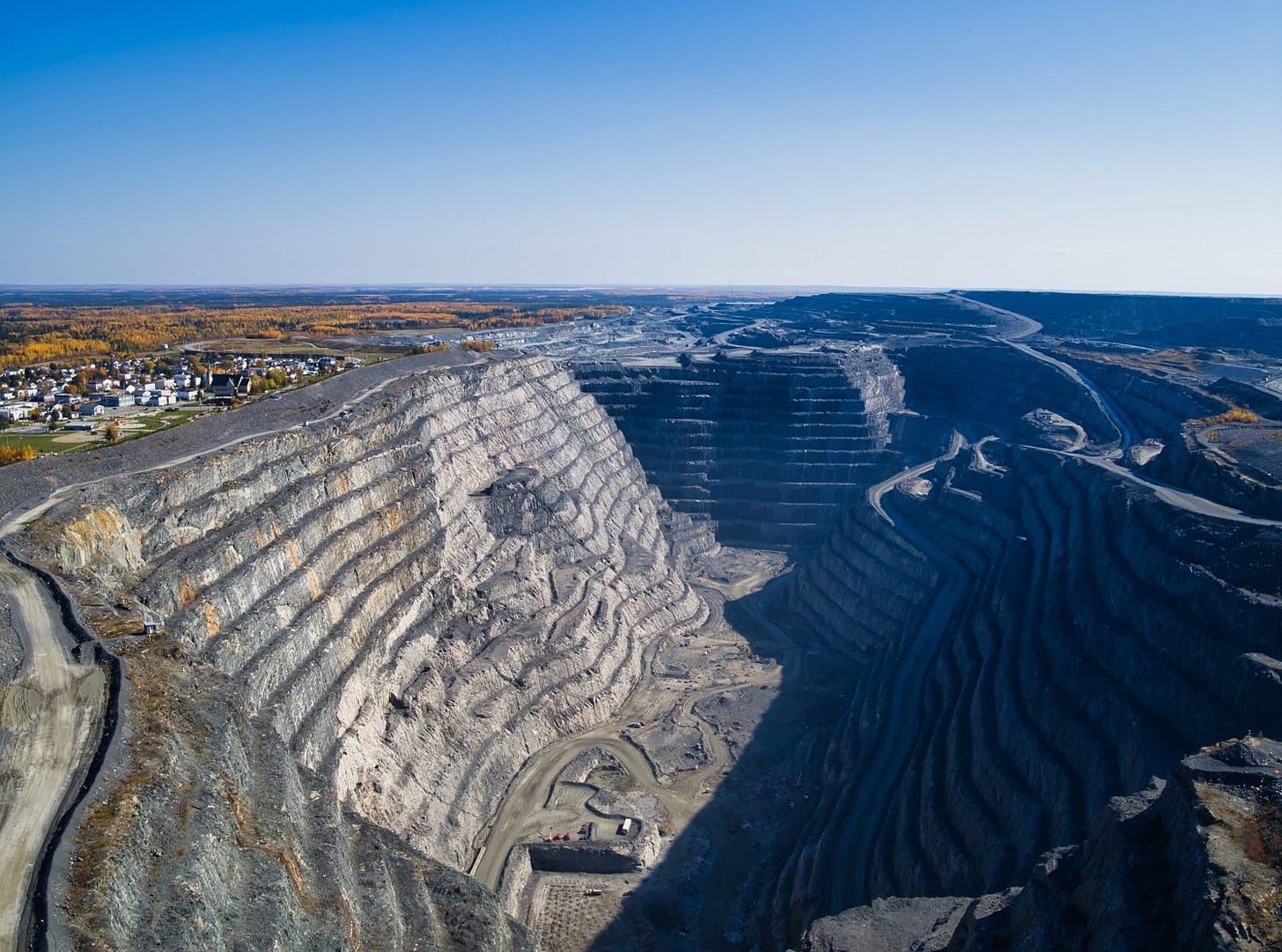
In order to illustrate the potential for catastrophic harm to ecosystems and human health that these mines pose I present a cautionary tale: The Liqi River was once full of fish: Almost none are left. Chemical spills from the Ganzizhou Rongda lithium mine have killed many. “The whole river stank, and it was full of dead yaks and dead fish,” said one villager.: “Masses” of dead fish covered the river.
The people got the mine shut down three times, only to have the government reopen it. One of the elders said, “Old people, we see the mines and we cry. What are the future generations going to do? How are they going to survive?”A local activist surveyed people in the area. Even if mining companies split the profits and promised to repair the land after the mines are exhausted, the Tibetans wanted no part of it. “God is in the mountains and the rivers, these are the places that spirits live,” he explained.” “sustainable development” technology (Lithium battery tech) offers everything: every luxury, every whim, available at the touch of a ‘carbon-free’ button. But the world that these technologies provide will be a rotting, desecrated, and, finally, dead world if we let them continue on their crusade to turn the living world into dead things, for profit and to perpetuate our obscene technologically addicted human “civilization”.
In the concentrations extracted via industrial mining operations, lithium is harmful to living beings. It interferes with sperm viability, causes birth defects, memory problems, kidney failure, movement disorders, and so on.
There’s no circumventing the fact that these energy-storage technologies are fundamentally destructive. And they're dependent on a global supply chain and advanced manufacturing technologies that, themselves, are fundamentally destructive. Machines making machines making machines; and while more and more hyperbolic "green" headlines are written, the planet is being killed.
As described above, our corrupt corporation captured government is helping to initiate large projects to pillage the lands of indigenous peoples (Cree of Eeyou Istchee, the Shakopaatikoong peoples of the Slate Falls first nation and the Waabitigweyaang peoples of Sandy Lake, among others ) and the body of Mother Earth in new Lithium (cobalt and tantalum) mines in northern Ontario and Quebec.
Given the nature of open pit mining, lithium leeching ponds and lithium refining, the inevitable result will be large scale poisoning of the water table and the ocean in James bay, contamination of the great lakes (through lake Superior, moving downstream into all the other great lakes), deforestation and genocide of local wildlife.
These corporations intend to clear cut the boreal forest, annihilating the little bit of remaining habitat that exists in Ontario for the moose, caribou, the lynx, bears, the mountain lion, wolves, fox, bobcats, eagles, hawks and countless other winged and four legged beings will be forcibly displaced from their homes (inevitably resulting in many of them attempting to return to their homes only to starve while pacing near the fences or to be poisoned by the toxins these mines produce).
The fish in the lakes, the whales and countless other beings in James bay, they will all be decimated by these projects.
These corporations appear to be moving in fast and as quiet as possible (paying off locals with bribes along the way and getting them to sign binding agreements) to avoid local and environmentalist resistance.
These projects will mean we trade blood for lithium so we can have fun i-pads and electric cars to play with. We will be trading the ancient beauty and majesty of the Boreal forest and all it's inhabitants for smart phones and tesla cars. I can't help but ask myself this question... Is it really worth it?
Here in southern Ontario where we live, if I look out the window right now I can see the result of the belief system that drives the endless commodification of nature and that which was once seen as sacred into money, monocultures, mines and more humans. For hundreds of kilometers in all directions, total devastation of the ancient Carolinian forest that used to cover all of southern Ontario. If I go and dip my cup in a stream here and drink it, I will taste and feel the results.. and for what? “Progress”? “Manifest Destiny”? Righteous colonial settlers exerting their “God given” right to enforce their “dominion” over the natural world and those they saw as less than human?
This trend of humanocentricism has been imposed on a great many different indigenous peoples on all the continents of the Earth. When combined with other variables related to the separation/reductionist mentality, what has resulted in the way in which that belief system has been pushed and represented here on the land that was once called Mshike Mnise (which means “Turtle Island” in the Anishinaabemowin language) resulting in much suffering, depravity, loss of life and ecological devastation.
Ancient food forests that were intentionally created and managed by indigenous peoples for centuries were chopped down by arrogant colonists that wanted to implement their relatively primitive (and extremely degenerative) mono-culture agriculture systems. Now instead of regenerative, diverse, nutrient dense, self perpetuating, decentralized food systems (which persisted for centuries to Thousands Of Years before the Europeans arrived) we have endless fields of GMO corn and soy, poisoned rivers and lakes and children that can recognize 1000 corporate logos but less than ten plant species.
This leads one to ask the question, wasn’t it really the Europeans who were “primitive savages”? The ecological and agricultural evidence certainly seems to indicate the European’s technical understanding of the natural world and their foresight to honor the ecosystems we depend on far was sorely lacking when compared to those that lived here for millennia prior.
Below is a presentation that explores some of the history I outlined above but also moves beyond the pain to share some wisdom about how we can correct course before its too late.
We have created a modern day society where people covet superficiality, ego, quick fix high tech comforts and digital addictions in which billions of human beings innately sense that something is horribly wrong with the way we live, yet they keep getting told that everything is going to be ok because big brother and his plutocratic friends are going to make everything ‘green’ and ‘sustainable’ so we can continue to feed our addictions without having to change the way we live.
It is a lie.
In order to understand the magnitude of that lie, I suggest you read a book called Bright Green Lies : How The Environmental Movement Lost It's Way (by Derrick Jensen, Lierre Keith and Max Wilbert).
The book essentially shatters the prevalent ‘sustainable development’ lies which tell us we can keep living the way we have been and save the Earth at the same time using solar, wind and other conventional ‘renewable’ energy technologies.
I think the book makes some extremely important points but I would also say that the authors are either riding on the 'linguistic/cultural coattails' of convenient propaganda or the authors are ignorant about certain aspects of what I consider to be a global warming / carbon emissions scam. I do not deny that the climate is changing (it always has been and always will be) but what I do have concerns with are perspectives that ignore all possible variables that could account for that change in climate/weather that are not anthropogenic. The book uses language that shows that either some of the authors are ignorant about the ‘anthropogenic climate change/global warming’ scam or they are aware that it’s BS but are using it for PR. Nevertheless, I still recommend reading the book as there there is still a great deal of other verifiable and extremely important information in its pages. The book very clearly exposes the myth of a “sustainable” industrial city infrastructure and the green washing lies surrounding the current photovoltaic, wind turbine and hydroelectric technologies and larger infrastructures.
Here is an excerpt from the book that I feel is important for us to understand as we choose where we want to put our energy, time and creativity for those of us that genuinely wish to strive to leave this world a little bit more free, verdant and beautiful than it was when we got here for those who will call this place home after we are gone.
"Bright green environmentalism has gained so much attention over the past 20 years that it has effectively colonized mainstream environmentalism. That’s because bright green proponents tell a lot of people what they want to hear, which is that you can have it all: industrial civilization and a planet too.
Or, put another way, you don’t have to change your lifestyle at all; you can have a planet and consume it too. But we can’t have it all. And if we want our planet to survive, we do have to change our lifestyle—radically. Bright green environmentalism and other forms of denial about our situation do great harm by wasting time we don’t have on “solutions” to sustainability that cannot work.
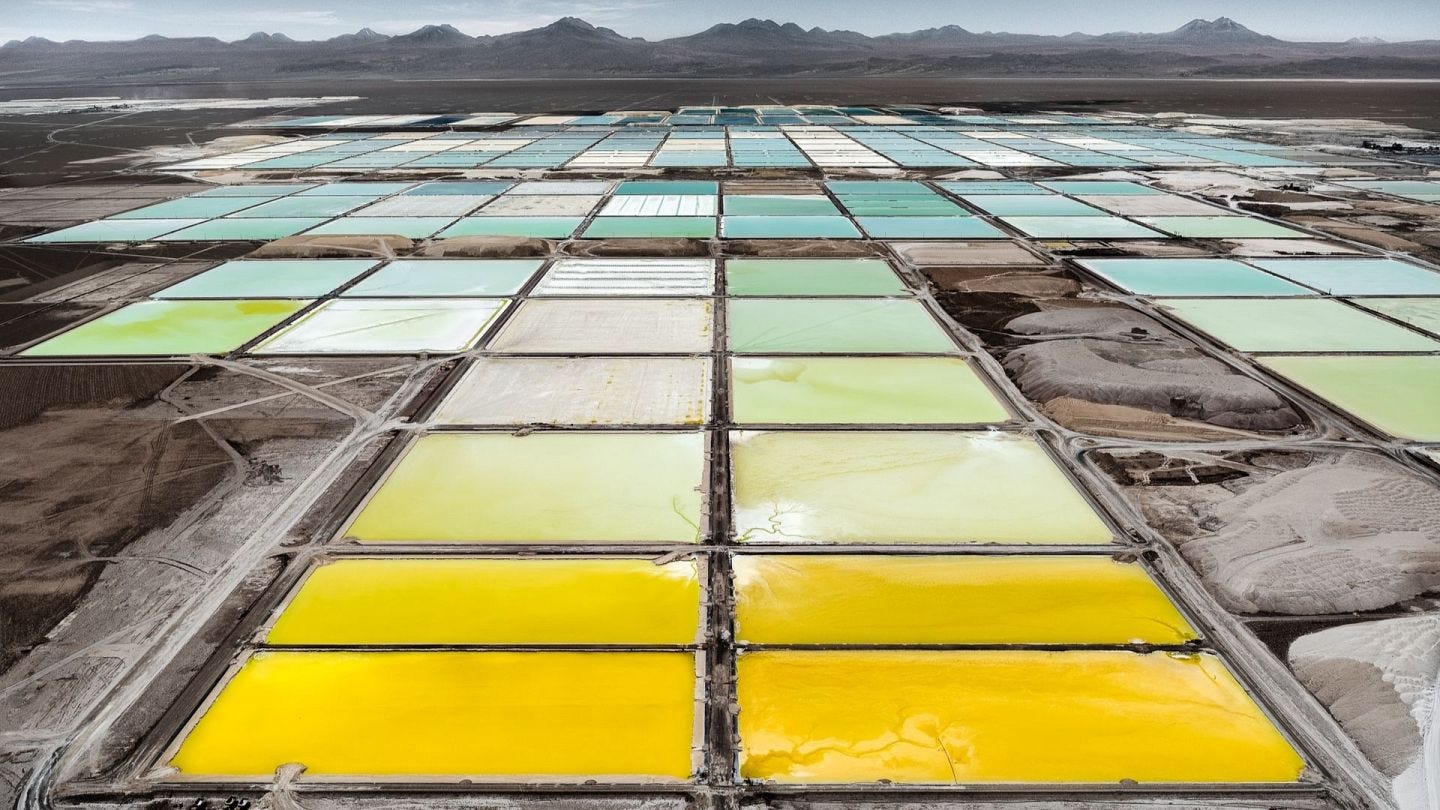
This book is an introduction to some of the lies common among the bright greens. We reveal many of these lies, analyze why and how they are false, and make clear the tricks the bright greens are pulling —possibly on themselves as well as the rest of us—to perpetuate these lies. Our hope is that once we’ve revealed these lies, our readers can use what they’ve learned to debunk other bright green claims.
We’re not saying innovation is never helpful. Nor are we saying we shouldn’t recycle, or that some forms of production aren’t more or less unsustainable than others, or that cities can’t be made less unsustainable.
We’re simply saying that we shouldn’t lie to ourselves, or to each other. Especially with the world at stake, we should tell the truth.
We’re saying that these bright green solutions are lies that allow us to maintain an unsustainable way of living while pretending that we are not killing the planet..
..we don’t have good news for you. To state it bluntly, something has gone terribly wrong with the environmental movement.


Once, we were the people who defended wild creatures and wild places. We loved our kin, we loved our home, and we fought for our beloved. Collectively, we formed a movement to protect our planet. Along the way, many of us searched for the reasons. Why were humans doing this? What could possibly compel the wanton sadism laying waste to the world? Was it our nature or were only some humans culpable? That analysis is crucial, of course. Without a proper diagnosis, correct treatment is impossible. This book lays out the best answers that we, the authors, have found We wrote this book because something has happened to our movement. The beings and biomes who were once at the center of our concern have been disappeared. In their place now stands the very system that is destroying them. The goal has been transformed: We’re supposed to save our way of life, not fight for the living planet; instead, we are to rally behind the “machines making machines making machines” that are devouring what’s left of our home.
Committed activists have brought the emergency of climate change into broad consciousness.. ..but they are solving for the wrong variable. Our way of life doesn’t need to be saved. The planet needs to be saved from our way of life.
There’s a name for members of this rising movement: bright green environmentalists. They believe that technology and design can render industrial civilization sustainable. The mechanism to drive the creation of these new technologies is consumerism. Thus, bright greens “treat consumerism as a salient green practice.” Indeed, they “embrace consumerism” as the path to prosperity for all. Of course, whatever prosperity we might achieve by consuming is strictly time limited, what with the planet being finite. But the only way to build the bright green narrative is to erase every awareness of the creatures and communities being consumed. They simply don’t matter. What matters is technology. Accept technology as our savior, the bright greens promise, and our current way of life is possible for everyone and forever. With the excised species gone from consciousness, the only problem left for the bright greens to solve is how to power the shiny, new machines...
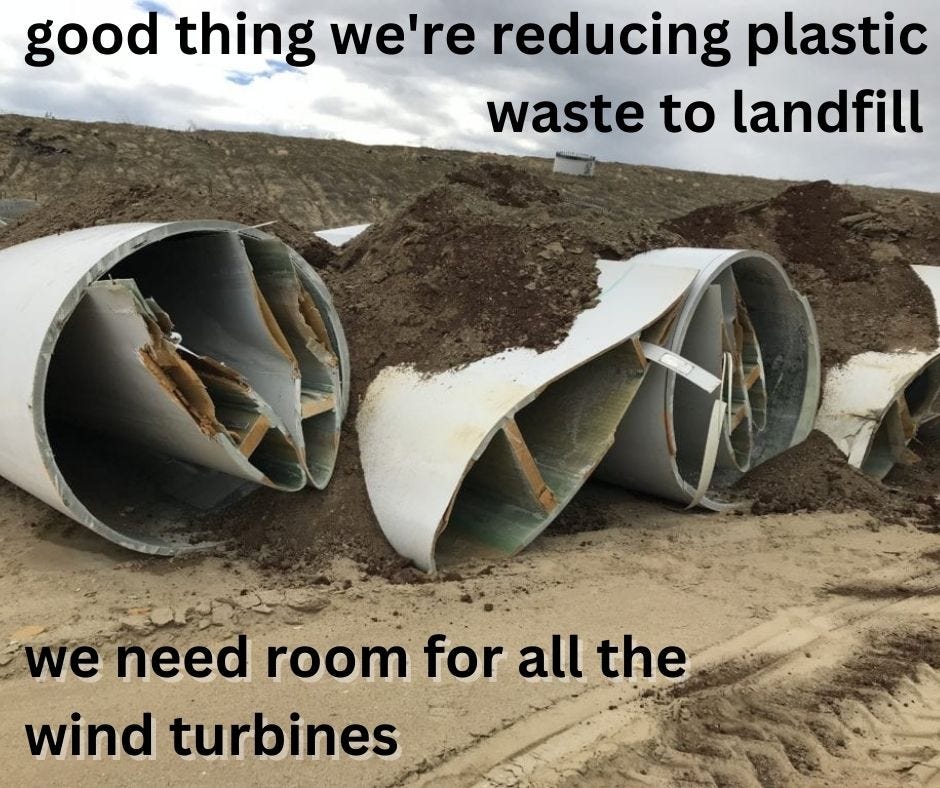
..It doesn’t matter how the magic trick was done. Even the critically endangered have been struck from regard. Now you see them, now you don’t: from the Florida yew (whose home is a single 15-mile stretch, now under threat from biomass production) to the Scottish wildcat (who number a grim 35, all at risk from a proposed wind installation). As if humans can somehow survive on a planet that’s been flayed of its species and bled out to a dead rock. Once we fought for the living. Now we are told to fight for their deaths, as the wind turbines come for the mountains and solar panels conquer the deserts...
We need to return to the real world. This culture functions by converting wild land into commodity production zones. Over the past 20 years, about 10 percent of the world’s remaining true wilderness has been lost. According to one study, between now and 2050, solar and wind “development” threaten to destroy as much land as urban sprawl and expansion of oil and gas, coal, and mining combined. Solar “development” outranks agricultural expansion and wind (tied for second place) as the single largest “development” threat considered in the study. Yet environmentalists continue to push solar, wind, and other bright green lies as solutions. This has become a movement that does not help the earth, but rather helps its destroyers.
Here’s a set of guiding questions or principles by which any bright green technology should be evaluated.
First, there is the technological thing itself, whether it’s a photovoltaic cell, a windmill, a battery. What is it? What is it made of? Where do these materials come from, and how are they extracted from the earth? What harms do these extractions cause? Who suffers these harms? What infrastructures are required to support these extractions? What harms are caused by these infrastructures? Who suffers these harms?
We need to return to the real world. We need to return to being people who love the world—all its places and all its creatures—and who will fight to defend it.
...There is so little time and even less hope, here in the midst of ruin, at the end of the world. Every biome is in shreds. The green flesh of forests has been stripped to grim sand. The word water has been drained of meaning; the Athabascan River is essentially a planned toxic spill now, oozing from the open wound of the Alberta tar sands. When birds fly over it, they drop dead from the poison. No one believes us when we say that, but it’s true.
The Appalachian Mountains are being blown to bits, their dense life of deciduous forests, including their human communities, reduced to a disposal problem called “overburden,” a concept and practice that should be considered a war crime: Living creatures—mountain laurels, wood thrush fledglings, somebody’s grandchildren—are not objects to be tossed into gullies.
.If there is no poetry after Auschwitz, there is no grammar after mountaintop removal... For living beings like Labrador ducks, Javan rhinos, and Xerces blue butterflies, there is the long silence of extinction...
Twelve thousand years ago, the war against the earth began. In nine places, people started to destroy the world by taking up agriculture. Understand what agriculture is: In blunt terms, you take a piece of land, clear every living thing off it—ultimately, down to the bacteria— and then plant it for human use. Make no mistake: agriculture is biotic cleansing.
That’s not agriculture on a bad day, or agriculture done poorly. That’s what agriculture actually is: the extirpation of living communities for a monocrop of humans. There were perhaps five million humans living on earth on the day this started—from this day to the ending of the world, indeed—and there are now well over seven billion.
The end is written into the beginning. As geologist David R. Montgomery points out, agricultural societies “last 800 to 2,000 years ... until the soil gives out.” The name for this diminishment is drawdown, and agriculture is in essence a slow bleed-out of soil, species, biomes, and ultimately the process of life itself. Vertebrate evolution has come to a halt for lack of habitat. With habitat taken by force and kept by force, Iowa alone uses the energy equivalent of 4,000 Nagasaki bombs every year. Agriculture is the original scorched-earth policy, which is why permaculturist Toby Hemenway and environmental writer Richard Manning have written the same sentence: “Sustainable agriculture is an oxymoron.” To quote Manning at length: “No biologist, or anyone else for that matter, could design a system of regulations that would make agriculture sustainable. Sustainable agriculture is an oxymoron. It mostly relies on an unnatural system of annual grasses grown in a monoculture, a system that nature does not sustain or even recognize as a natural system. We sustain it with plows, petrochemicals, fences, and subsidies, because there is no other way to sustain it.”
Agriculture is what creates the human pattern called civilization. Civilization is not the same as culture—all humans create culture. A culture is, broadly, the set of customs, traditions, and values particular to a group of people. Civilization is the word for one specific way of life: people living in cities. Most definitions of city reference permanence, population density, and division of labor as a city’s salient features. Rarely stated is the reality of people living in numbers large enough to require the importation of resources: city dwellers need more than the land can give. Food, water, and energy have to come from somewhere else.
From that point forward, it doesn’t matter what lovely, peaceful values people hold in their hearts. The society is dependent on imperialism and genocide because no one willingly gives up their land, their water, their trees. But since the city has used up its own, it has to go out and get those from somewhere else. That’s the last 10,000 years in a few sentences.
Over and over and over, the pattern is the same. There’s a bloated power center surrounded by conquered colonies, from which the center extracts what it wants, until eventually it collapses. The conjoined horrors of militarism and slavery begin with agriculture. Agricultural societies end up militarized—and they always do—for three reasons. First, agriculture creates a surplus, and if it can be stored, it can be stolen. So the surplus needs to be protected. The people who do that are called soldiers.

Second, the drawdown inherent in this activity means that agriculturalists will always need more land, more soil, and more resources. They need an entire class of people whose job is war, whose job is taking land and resources by force—agriculture makes that possible as well as inevitable. Third, agriculture is backbreaking labor. For anyone to have leisure, they need slaves. By the year 1800, when the fossil fuel age began, three-quarters of the people on this planet were living in conditions of slavery, indenture, or serfdom. Force is the only way to get and keep that many people enslaved. We’ve largely forgotten this because we’ve been using machines—which in turn use fossil fuel—to do that work for us.
Topsoil on the North American prairie was 12 feet deep when the farmer-soldiers arrived in the early 1800s. In less than a century, it could only be measured in inches. And the “Great Plowing” was done before the invention of the internal combustion engine, with only the power of oxen and horses. Fossil fuel is an accelerant, but the impulse to subdue the planet—and dominate it to its very death—was already there. The mechanistic mind is built on an epistemology of domination. It wants a heirarchy. It needs to separate the animate from the inanimate and then rank them in order of moral standing. In his book, History of Animals, Aristotle arranged life with minerals at the bottom, serving as an insensate substrate. Plants are next, then various animals, with humans at the top. This system, which he named la scala naturae, meaning “the great chain of being,” has held sway for 2,000 years.
This mind and its scala are wrong. Moment to moment, the world is kept alive only by the bacteria (and myriad other organisms) doing the basic work of life, which no one else can do, and by maintaining relationships more complex than any we could ever understand. We are all here only because of other beings.
...There are real solutions. Simply put, we have to stop destroying the planet and let natural life come back. There are people everywhere doing exactly that, and nature is responding, sometimes miraculously. The wounded are healed, the missing reappear, and the exiled return. It’s not too late...
We have to take back our movement and defend our beloved. How can we do less? And with all of life on our side, how can we lose?
“May the truth be your armor,” urged Marcus Aurelius. The truths in this book are hard, but you will need them to defend your beloved."
(from Bright Green Lies : How The Environmental Movement Lost It's Way and What We Can Do About It ( 2021) by Derrick Jensen, Lierre Keith and Max Wilbert)
Another book I feel is important to highlight to empower those of you that have a genuine intent to put compassion and integrity before material comfort is “Cobalt Red”
An excerpt from the book above:
“THE SOLDIERS ARE WILD and wide-eyed as they point their weapons at the villagers trying to enter the mining area at Kamilombe. Although they are desperate to reach their loved ones just a stone’s throw away, the villagers are denied access. What has happened here must not be seen. There can be no record or evidence, only the haunting memories of those who stood at this place where hope was lost. My guide urges me to stay at the periphery; the situation is too unpredictable. From the fringes, it is difficult to see the details of the accident. The craterous landscape is obscured by a leaden haze that refuses the entry of light. Distant hills appear only as the vague silhouette of a lumbering beast.
I move closer to investigate, treading carefully into the boiling crowd. I catch sight of a body in the dirt. It is a child, lying motionless within a storm of dust and despair. I try to make out the features of his face, but they elude me. Around the lifeless body, the ocher gravel has been stained in dark shades of red, like burnt umber or rusted metal. Until this moment, I thought that the ground in the Congo took its vermillion hue from the copper in the dirt, but now I cannot help but wonder whether the earth here is red because of all the blood that has spilled upon it.
I inch toward the cordon to see the child more clearly. Tensions between the soldiers and villagers escalate to the brink of riot. A soldier shouts angrily and waves his gun at me. I’ve drifted too close and lingered too long. I take one final look toward the child. I can see his face now, locked in a terminal expression of dread. That is the lasting image I take from the Congo—the heart of Africa reduced to the bloodstained corpse of a child, who died solely because he was digging for cobalt.”
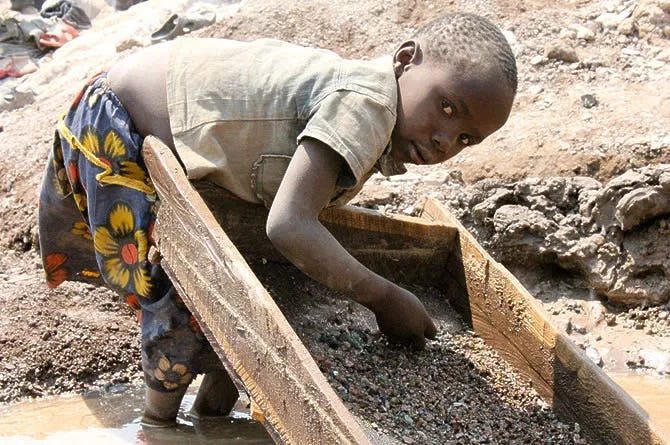
Lithium mining, cobalt mining and other forms of extraction that are being promoted as "green" are poisoning water, destroying habitat, facilitating consumerism, and destroying poor and indigenous communities around the world.
In concentration, lithium is harmful to living beings. It can interfere with sperm viability, cause birth defects, memory problems, kidney failure, movement disorders, and so on. But the other materials in an electric-car battery cause about six times more harm than lithium, with nickel and cobalt electrodes being the most destructive component.
About half of the cobalt used in lithium batteries comes from the Democratic Republic of the Congo, where 40,000 children as young as seven are essentially enslaved in mines, carrying backbreaking loads in conditions of intense heat, with no safety equipment, under abusive managers and guards, for a wage of a dollar a day.
Companies that make batteries using cobalt from this area include Apple, Microsoft, and Vodaphone.
The same goes for Tungsten and Tantalum, which means that this computer I am using, and the smart phones you and I are using and your neighbor's fancy electric vehicle are all products that incentivized (and directly funded) the devastation of ecosystems and perpetuated suffering and unnecessary death of children living in the Congo.
For more information read:
Mining Cobalt Sacrifices African Children On The Green Altar Of Technocracy https://www.technocracy.news/mining-cobalt-sacrifices-african-children-on-the-green-altar-of-technocracy/
"Green" Energy Is a Scam : https://www.corbettreport.com/green-energy-is-a-scam-it-isnt-meant-to-work/
Those that wish to walk a path guided by any kind of honest moral compass (including but not limited to the permaculture ethical imperative of People Care-Earth Care-Future Care) are going to have to make some hard choices if we want our actions to continue to align with the principles we espouse and claim to live by.
What we are witnessing when we see governments, corporations and individuals promoting wind turbines, solar panels, biomass conversion operations and hydroelectric dams as a viable "sustainable" alternative to oil/coal which can continue to power our industrialized way of life are Bright Green Lies, Greenwashing tactics, and Green Colonialism.
While I do not suggest we should all become luddites instantaneously I would like to now point out that humans have existed for millennia without electricity and a great many of them lived fulfilling lives of purpose, creativity, grace, courage and spiritual growth. The inherent built in perspective that sees cities and industrial electrical grids as being something we must perpetuate (via either conventional means or more "sustainable" alternatives) misses the point that there is a third option. The third option is refusing to participate in funding the destruction of Mother Earth's body and innocent children (such as those that work in the Cobalt mines in the Congo to get the rare metals required to make these smart devices we are reading and writing on now) and being willing to make the sacrifice of letting go of our high tech addictions and creature comforts to live a more simple life in close symbiotic connection with the living Earth where we live (as our ancestors did). Many will not be willing to do that, and will make excuses why we must continue to buy high tech gadgets, build out cities and power the industrial power grid as the real ethical alternative is something they are not willing to consider. In the end it all boils down to if we believe that our comfort and enjoyment is worth more than the lives of children in the Cobalt mines and the integrity of the ecosystems all over the world that are being strip mined and poisoned so we can continue to live comfortably.
Robin Wall Kimmerer (who is an author, scientist and citizen of the Potawatomi Nation) comments on the difference in the world view of her ancestors to the worldview of the European colonialists (which clearly still dominates the mainstream cultural worldview in the west even today) by saying:
“It is a hallmark of our time in human history that we think we are alone, perched at the top of the pyramid of life, in charge of it all.. ..Aided by religion that made God in the image of man, humans alone were perceived to have the capacity for reason, for sentience, for choice, for language. But long before that error was promulgated, people knew the trees were storytellers. But then we forgot. Or were made to forget by the ones who chased divinity out of the forest and forced it into the sky. The stories of trees were erased from our knowing..” (quoted from https://www.yesmagazine.org/environment/2021/10/29/hearing-the-language-of-trees )
Recently, I have begun to explore the ancient ways of our ancient Celtic and Druidic ancestors in the hopes I might glean some wisdom from their ways of perceiving the world, perceiving their fellow humans (and non-human beings) and their strategies for cultivating food and organizing communities so that I might draw from their deep well of experience as I move forward to contribute towards creating intentional communities and decentralized food/medicine cultivation systems.
The forest and all aspects of the living Earth were seen as sacred and revered by the Druids, and their successors, the Brehon.
The ancient Celtic people’s were taught that each tree had a series of philosophies around it. These traditions were reinforced daily in the oral culture — which was a voluntarily agreed upon system for protecting nature. This system was agreed upon each time a word was written or carved into stone for it became the foundation for the Ogham Script.
(You can learn more about the Ogham Script here: https://dianaberesford-kroeger.com/the-celtic-alphabet-of-trees/ and here )
For those that are not aware, Europe’s very first alphabet (Ogham Script) arose in Celtic culture and is comprised of characters that are mostly named after trees — all of which were considered sacred because of their medicinal properties. The alphabet begins with a symbol for a shoreline pine and ends with a blackthorn tree.
The usage of this living language rooted in the trees and medicine plants provided a cultural and literary foundation that ensured people didn’t harvest everything and left medicine for their children’s children’s children. Trees with important medicine had a sacred status as a form of protection against human greed.
Irish botanist, medical biochemist (and keeper of the ancient indigenous Celtic medicine knowledge) Diana Beresford-Kroeger comments on the connection of the natural world to the word and concept of Saoirse by saying:
“A great forest not only heals people with medicinal aerosols but rekindles freedom.
You go into a forest and come out in peace. That is the spiritual reality. You go in one way and come out changed, whether you have dogs and cats with you or people. You go in and it opens up your spirit, and your thinking changes as your breathing changes and you come out and you are refreshed.
You never come out with tension in your heart. You come out feeling liberated. And again, there is that word, saoirse. You feel and come out of the forest with saoirse, liberty in your soul.
It is such a gift to the human body. It becomes a hospital for your soul. And then you are ready to go on with your life.”
While I acknowledge that no ancient culture was perfect, and the Druidic ways/Celtic tribes and indigenous peoples of Turtle Island are no exceptions, I choose to heed the warning and guidance offered in this Prophecy Of The Seventh Fire (if you are not familiar, I described what it is and shared a video in my post titled “The Three Sisters and The Time Of The Seventh Fire” and I choose to look to my ancestors for guidance on my path to choose correctly at this critical fork in the road.
Despite the disheartening behavior of billions of confused, lost and egocentric human beings, I draw hope, inspiration and faith from observing the irrepressible regenerative capacity of the living Earth and those who align their creative capacity with her.
It is easy to talk the talk, but walking the walk (while living in a civilization built on extraction, colonialism, warfare, fear, anthropocentrism and the wholesale commodification of the sacred) is not easy. My life is a work in progress, when I look in the mirror to take account for my own involvement in activities and giving my energy (money) to industries that are involved in perpetuating the depravity and ecological devastation it hurts... but that's okay. In fact, I see the pain I feel in my heart when I open my mind to take an honest look at those wounds I am inflicting on my fellow beings (through how I am choosing to live and what products I am purchasing) as a means to hone my moral compass... I see this hurt as scars of the heart that can serve as maps for my soul. Below is a video where Charles Eisenstein offers some insight as to how we got to where we are today and what we can do with the hurt (or “longing” for a more compassionate and honorable culture) that I described above:
That compass points in a direction that offers a promise of a more beautiful world that my heart knows is possible. It is a compass that compels me to strive to further align my own daily actions with the Earth's regenerative capacity and hone where I give my energy to fully reflect my acknowledgement of the sacredness of all life.
I choose to have faith that many of those who choose a path that is devoted to and grounded in love, perpetual learning, humility, compassion, having the courage to strive to protect those that cannot protect themselves, giving a voice to those that cannot speak for themselves and taking steps to embody that which one would like to see manifest on this world for future generations will be guided through the storm ahead to find a fertile place to plant their seeds for a new way of living to set down roots when the time is right.
We live in a time when a transnational racketeering cartel (and it's myriad subservient institutions/corporations) work tirelessly to influence and entice you into coveting material things, vanity, quick fix high tech solutions and human exceptionalism. Do not allow yourself to be seduced by the fallacy that tells you some external force, individual, institution or technology is going to solve all our problems for us.
In, is the only way out, for it is within that we may re-kindle the spark that we were born with to become a flame and illuminate a path forward that honors the sacredness of all life. Do not allow the fleeting shadows in our midst to distract you from the sacred tasks you came here to accomplish. You are the story tellers and the dreamers of the dreams, weaving threads together to become the fabric of reality. Where you focus your attention, thoughts, emotions and actions are paint brush strokes across the fabric of the canvas that becomes our shared experience... so let us choose our thoughts, emotions and actions with the knowing we shape the pathways we now find before our feet.
Each of us can begin to take steps to reconnect our health and well being with the health and well being of our local ecosystems, bioregion and our local community (comprised of both humans and the myriad other beings that call the land home where we live).
This can begin with just taking time to get out into nature and truly give our attention to recognizing the intelligence and spirit of our fellow beings. This can take the form of “forest bathing”, bird watching, flower appreciation or perhaps something as simple as being truly present and hugging a tree. As Johrey Elizabeth Magdolyn astutely and lovingly points out in the article linked below, we have a lot to learn about our elders in the tree kingdom, and perhaps the best way to start is by connecting from the heart, with humility and friendship.
Protecting, sharing and planting seeds is another powerful method for us to give back to the living Earth and begin to ‘be at home on the Earth’.
As I have said in my previous post, I consider the act of saving and sharing heirloom seed as an act of sabotage as it throws a monkey wrench into the machinery of the global corporatocracy (that seeks to own all seed, buying out and shutting down the small family owned companies, patenting what they can and seeking to perpetually profit from their false claims of owning intellectual rights to the genetic fabric of life).
Each time we save and share seeds (and share the resulting abundance of crops) we are taking steps towards divesting from/boycotting centralized food and monetary systems which are corrupt and do much harm to the Earth and our collective future.
Though even more importantly, seed saving and regenerative gardening is a life affirming act that lends our time and energy we were gifted on this Earth to honor and preserve that which is sacred and ensure that future generations will be able to experience the same gifts we have.
Now is the time for us to give thanks for all that Mother Earth gives to us and remember that we each came here with our own unique gifts that we can use to reciprocate and provide the medicine this world and her inhabitants need now. Look within to remember your gifts and go forth now to share them with the world.
We can plant regenerative gardens and help ecosystems to regenerate while simultaneously providing food/health sovereignty by creating food forests where we live.
One of the most powerful choices we can make begins with a handful of seeds and some tlc.
For more information on how to start your own food forest check out these book recommendations and video presentations: https://recipesforreciprocity.com/book-recommendations/
Dr. Lyla June Johnston (aka Lyla June) is an Indigenous musician, author, and community organizer of Diné (Navajo), Tsétsêhéstâhese (Cheyenne) and European lineages. Her multi-genre presentation style has engaged audiences across the globe towards personal, collective, and ecological healing. She blends her study of Human Ecology at Stanford, graduate work in Indigenous Pedagogy, and the traditional worldview she grew up with to inform her music, perspectives and solutions. Her doctoral research focused on the ways in which pre-colonial Indigenous Nations shaped large regions of Turtle Island (aka the Americas) to produce abundant food systems for humans and non-humans.
(links to her work can be found in the description section of the YouTube video linked above).
and remember, all…



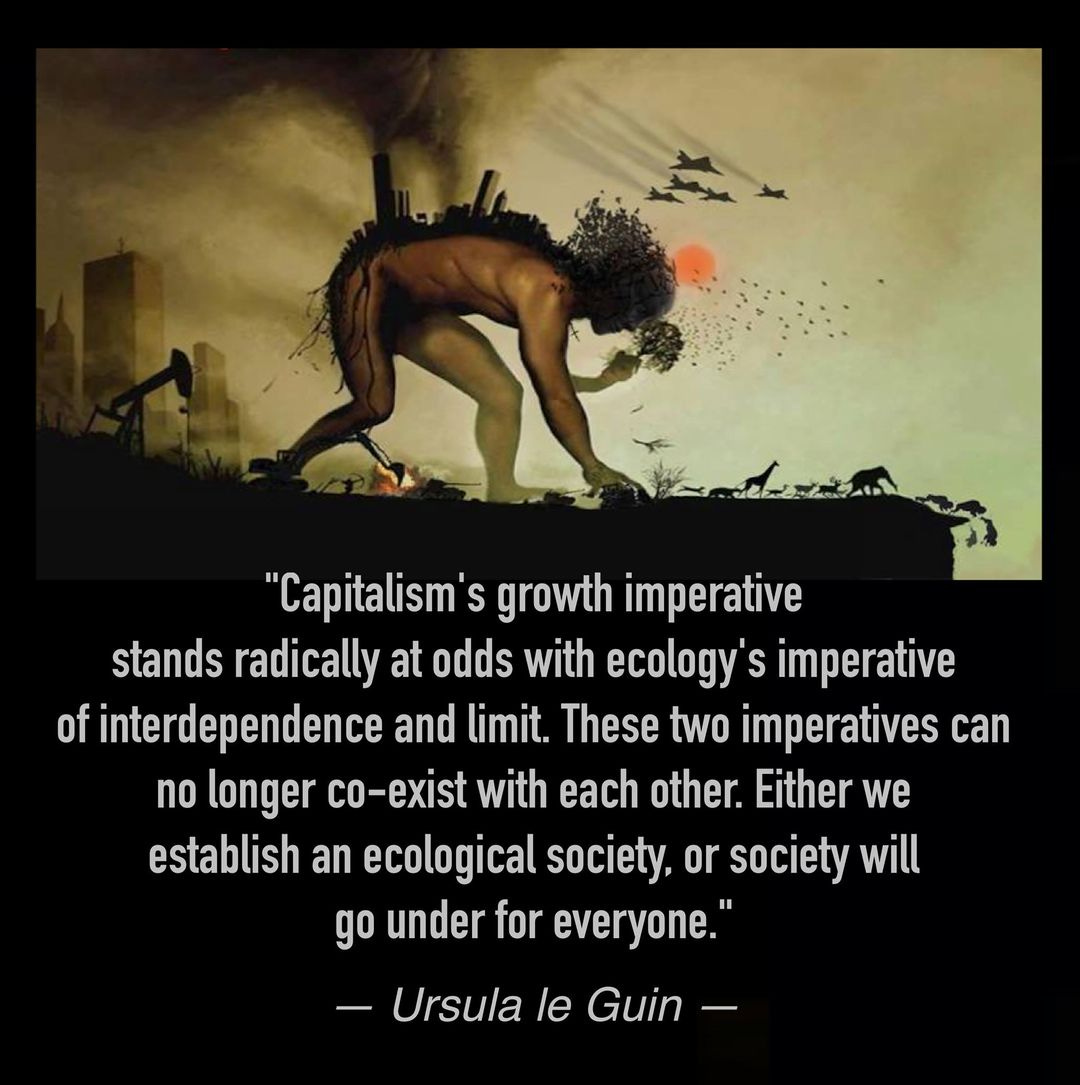

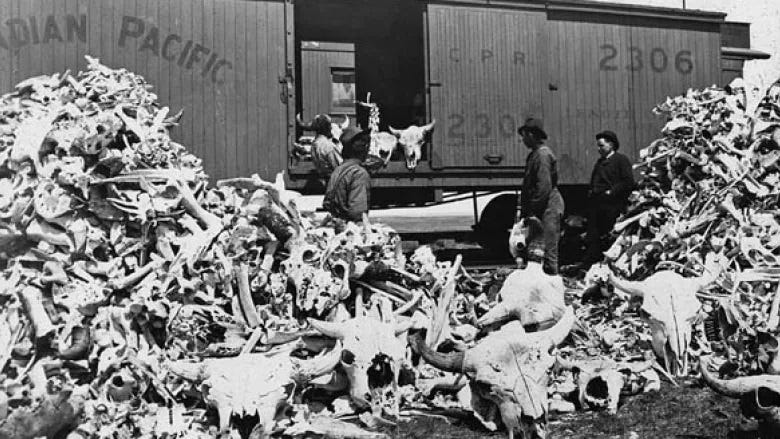



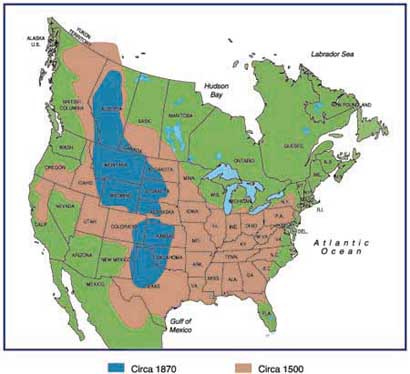
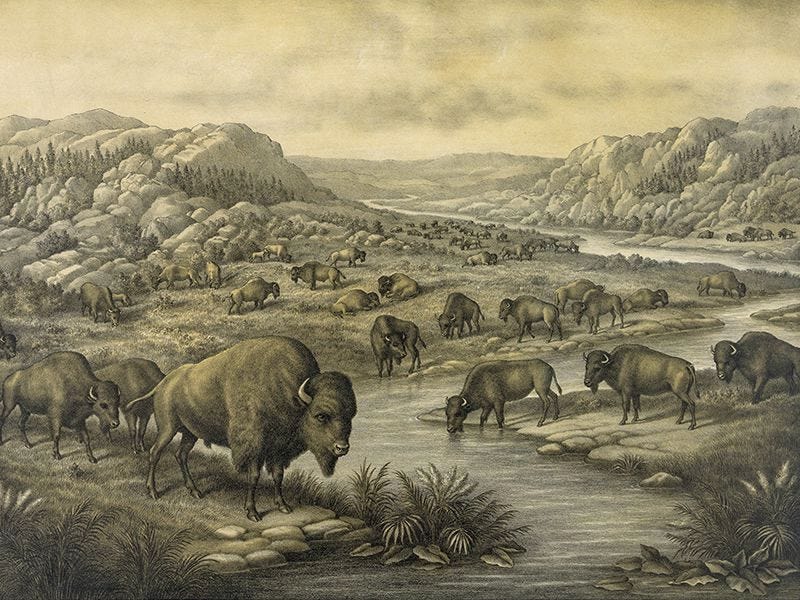
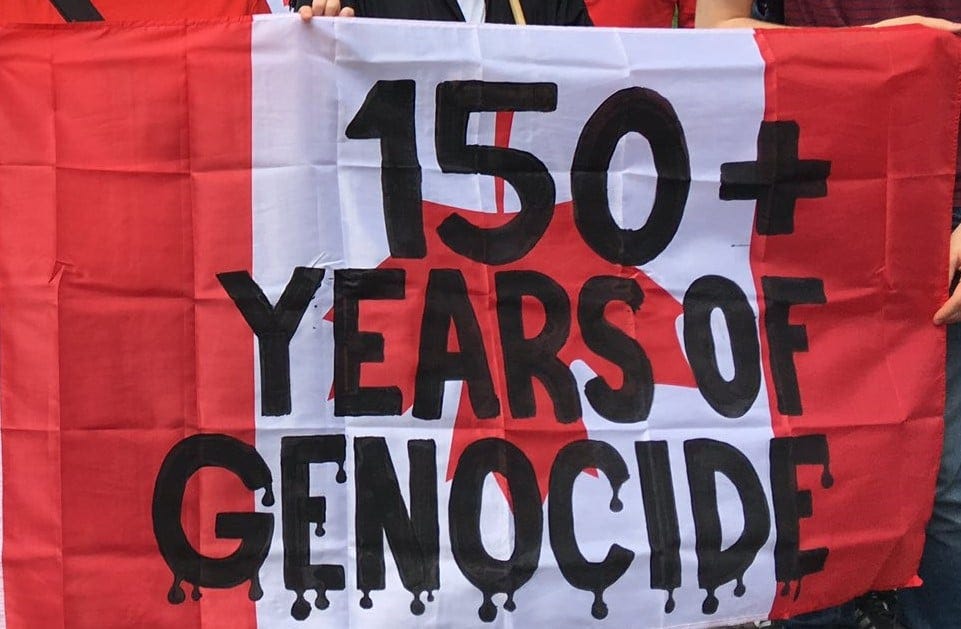



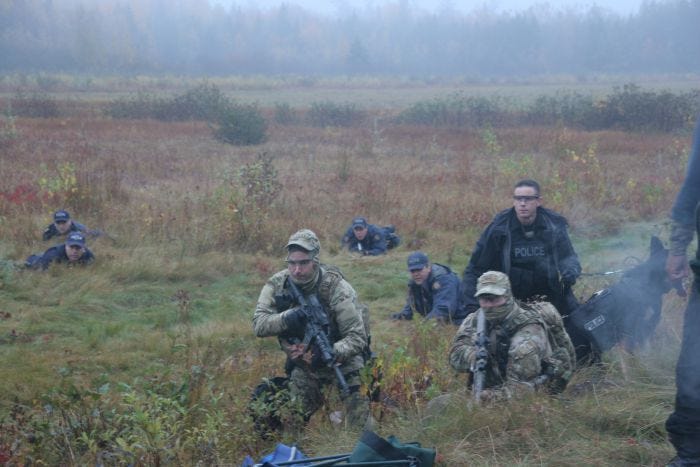
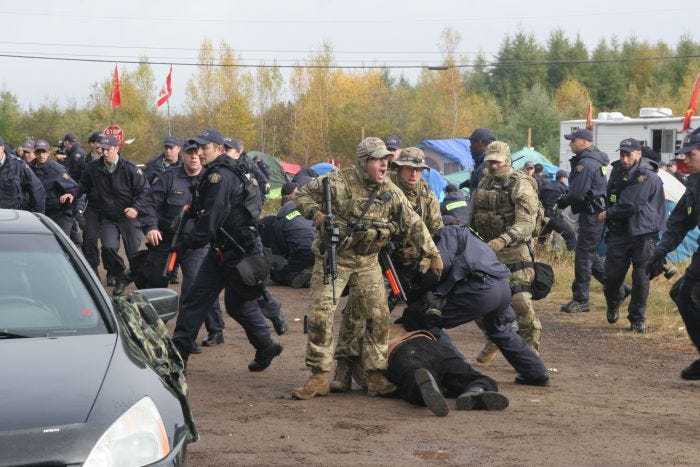


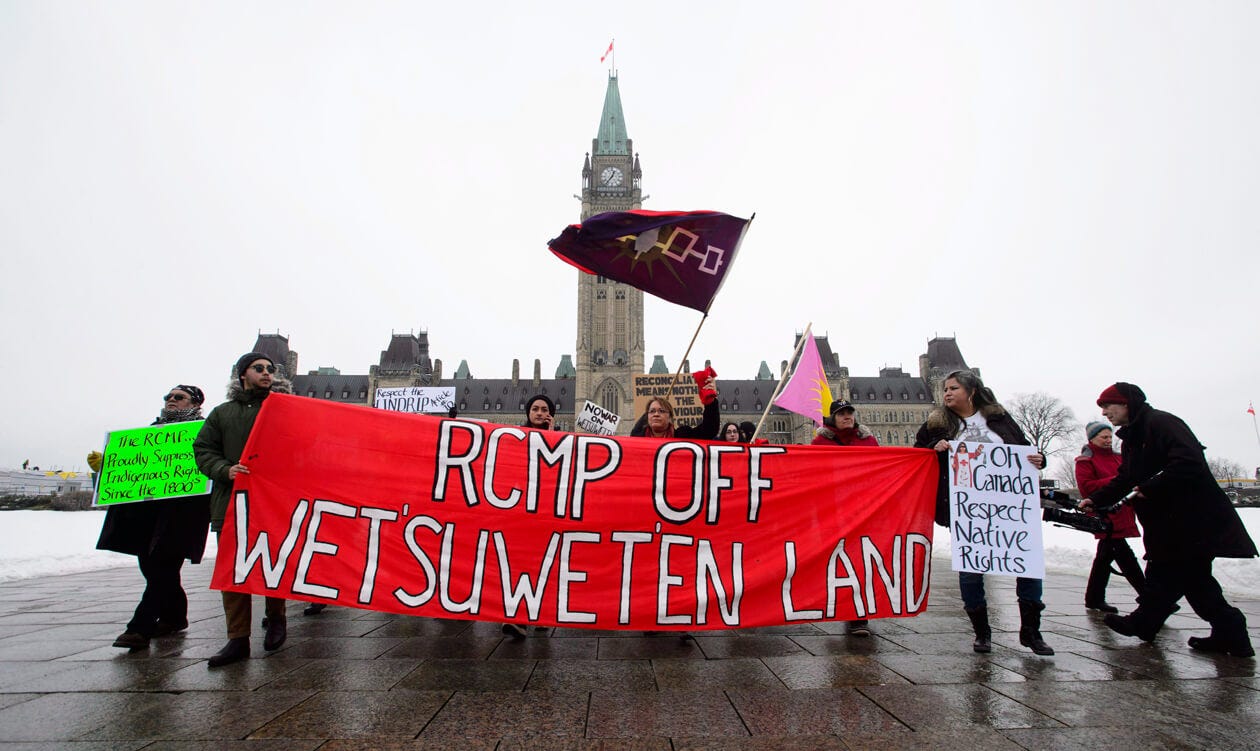
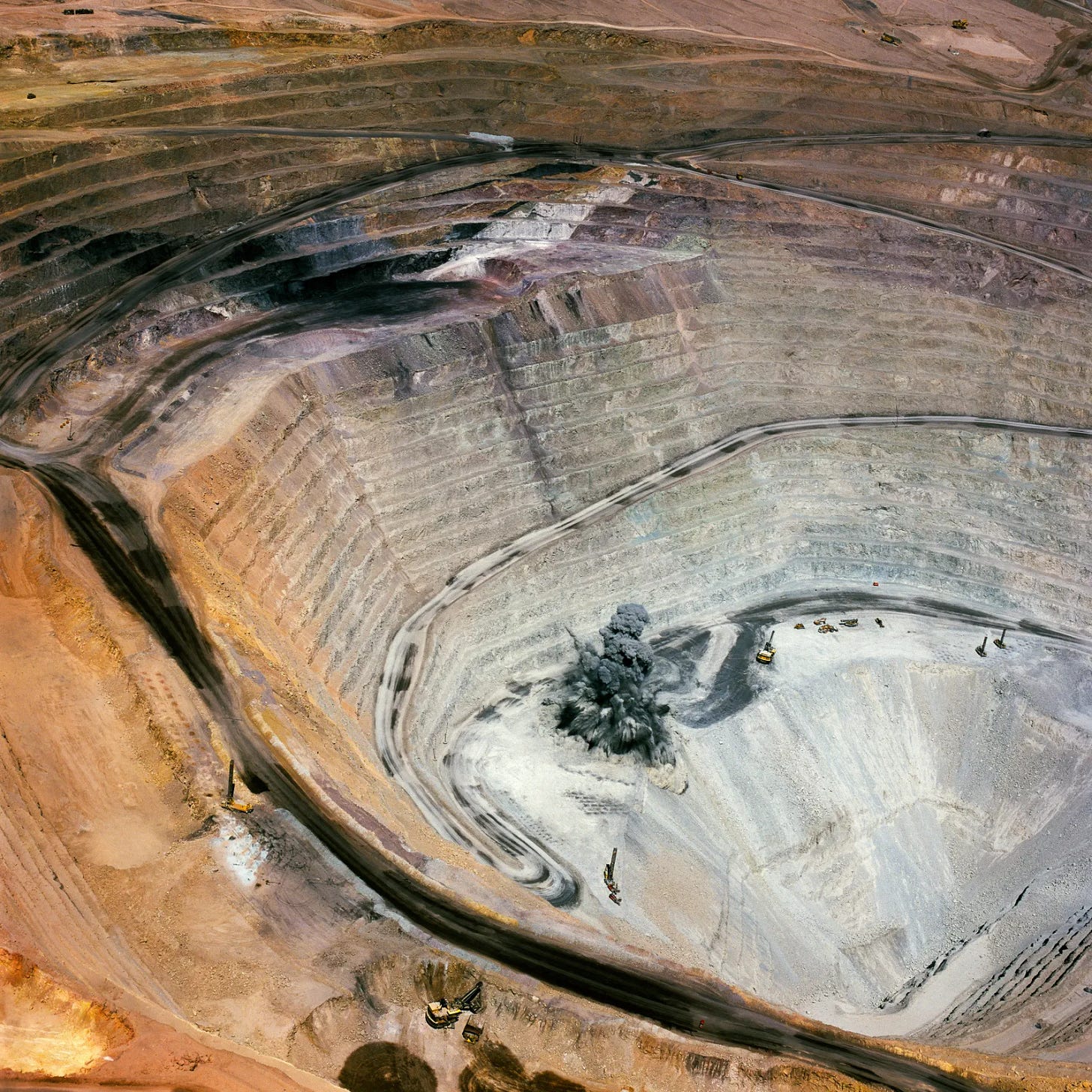
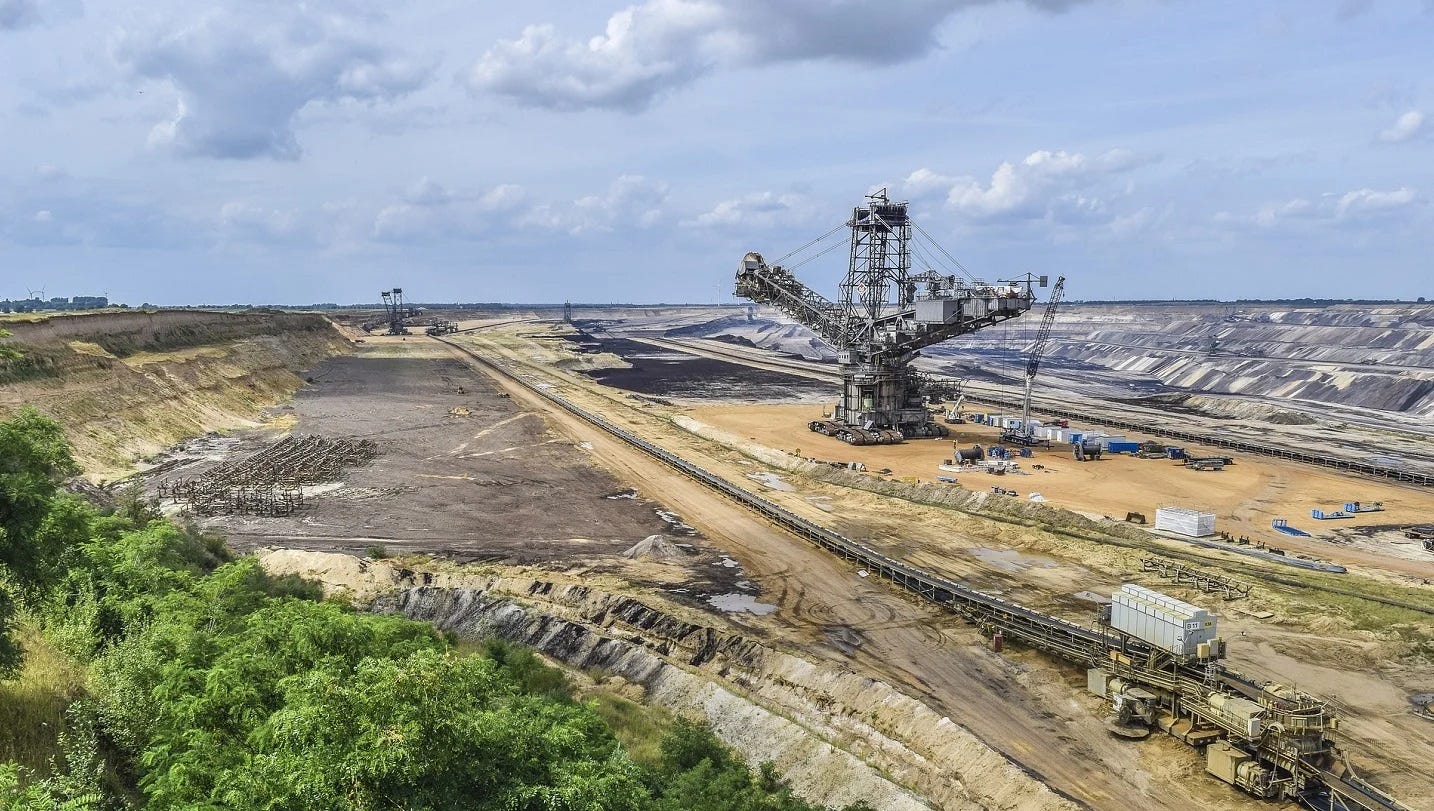
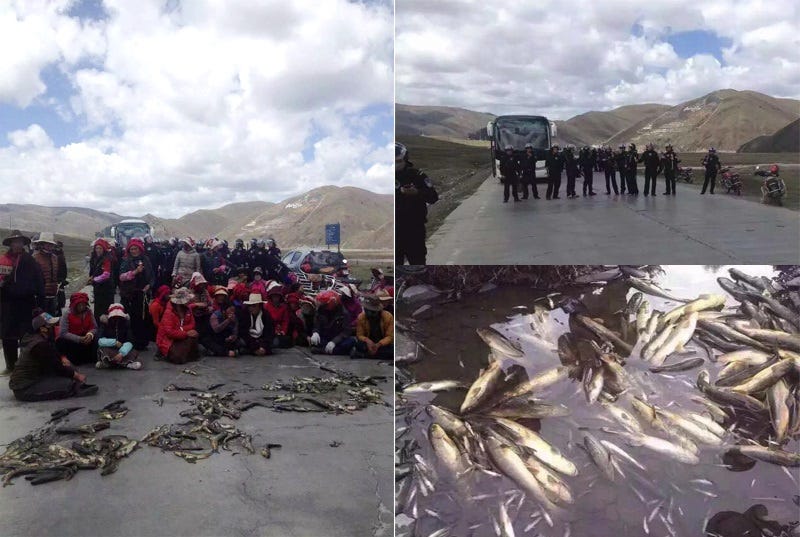
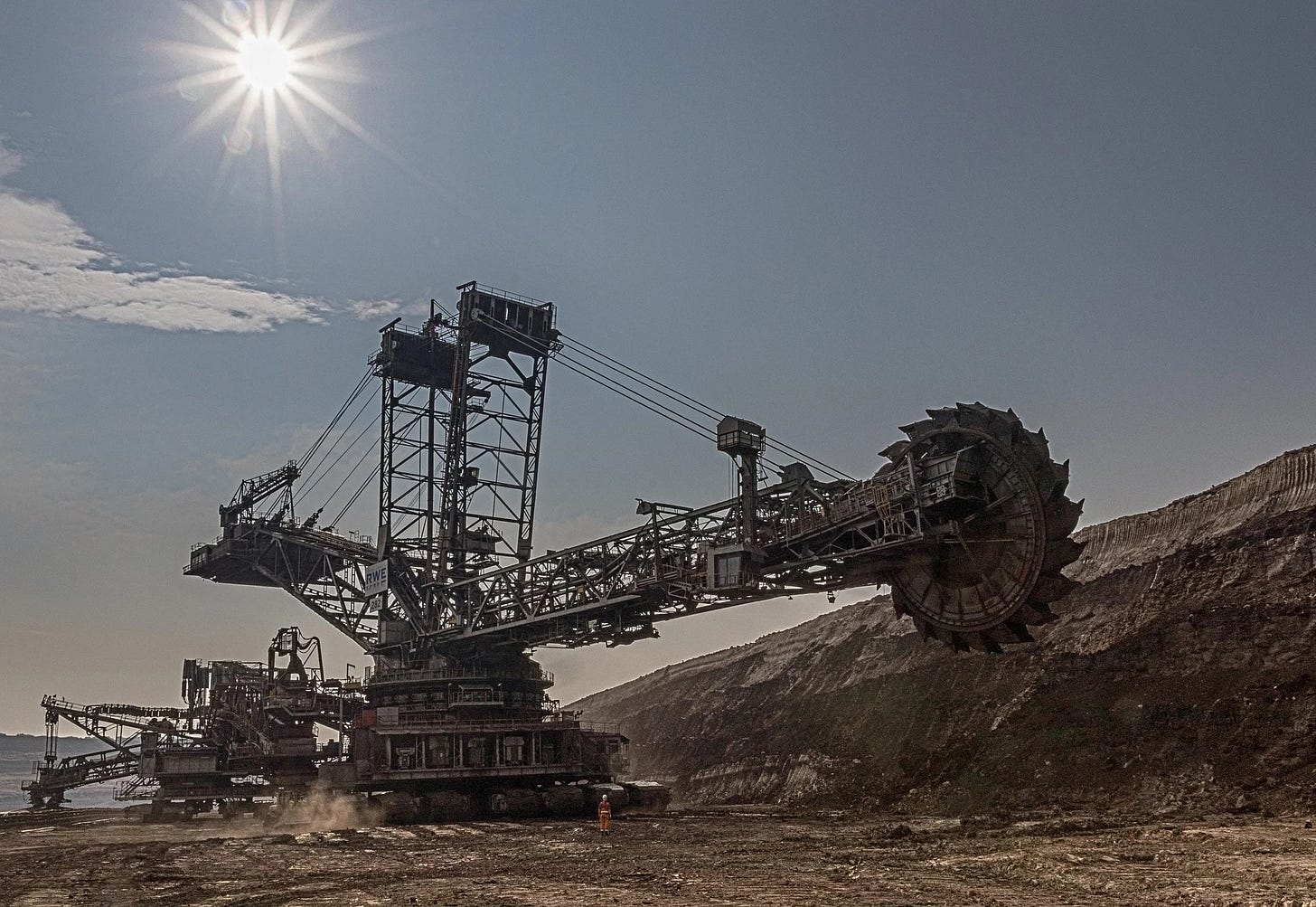
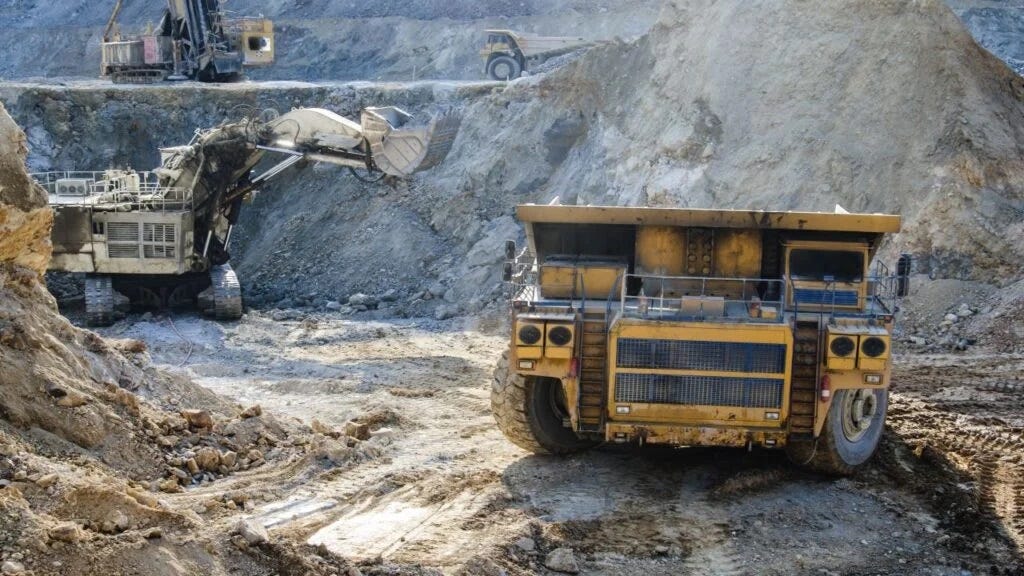
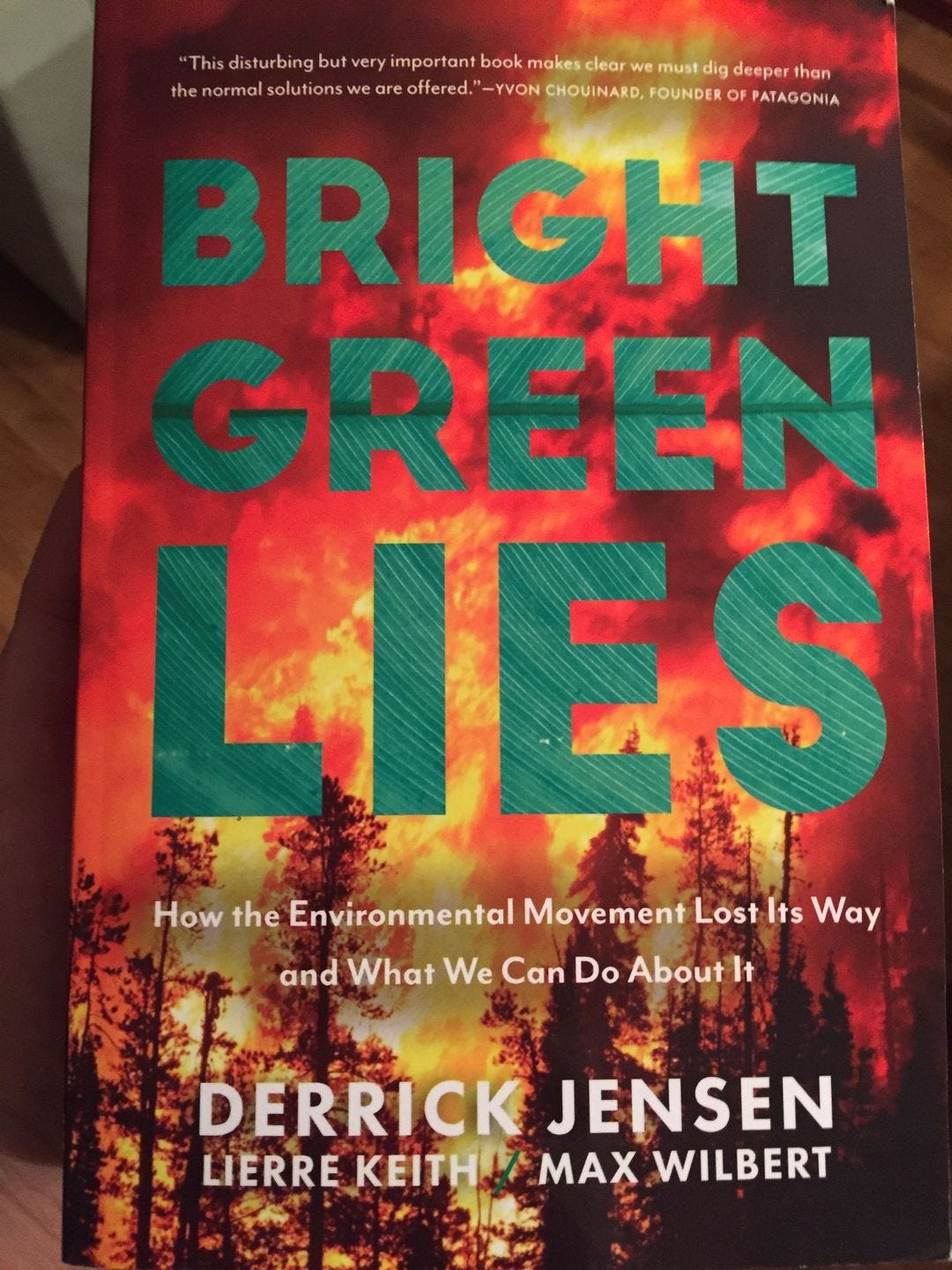





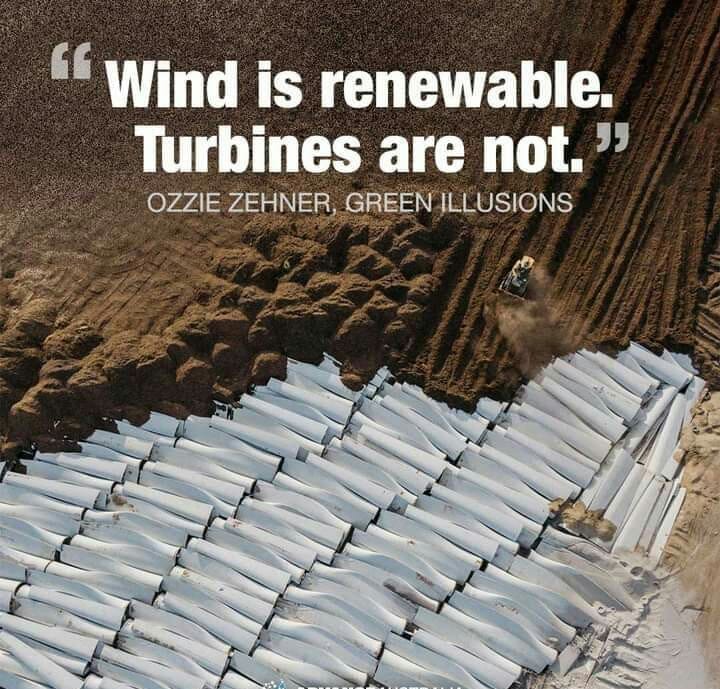
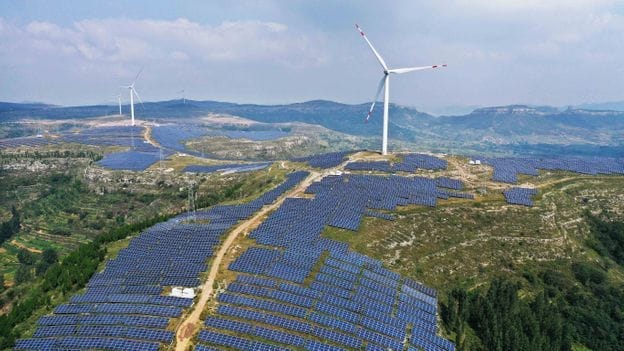

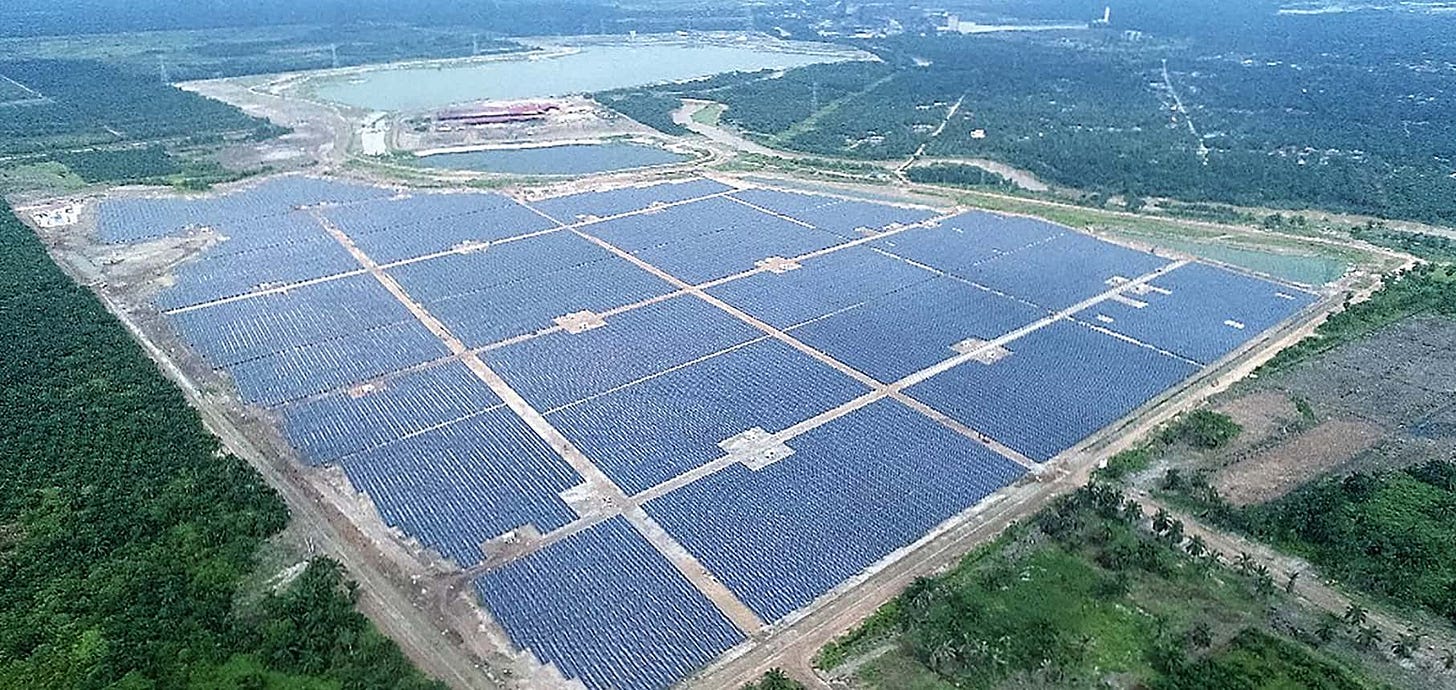


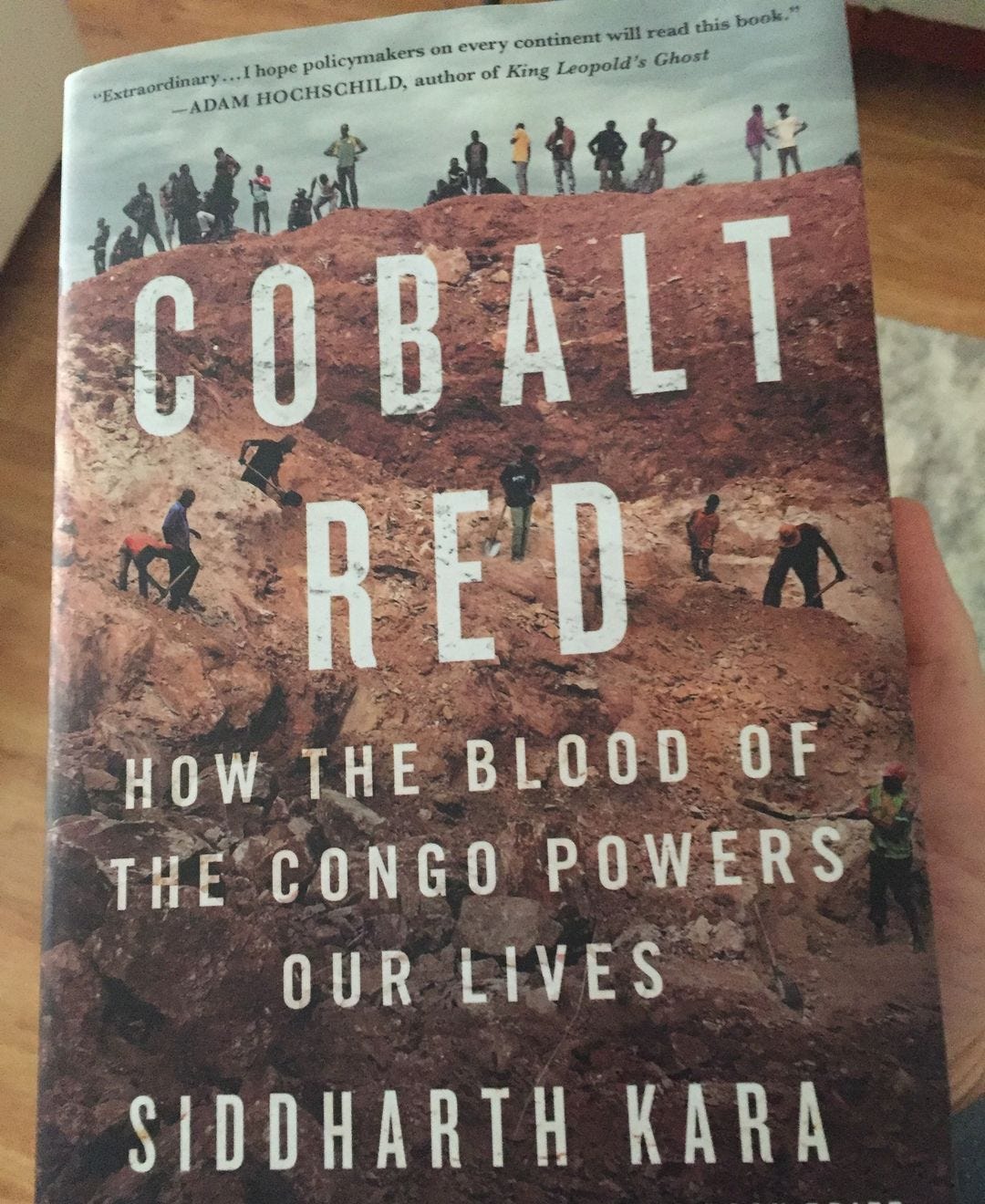

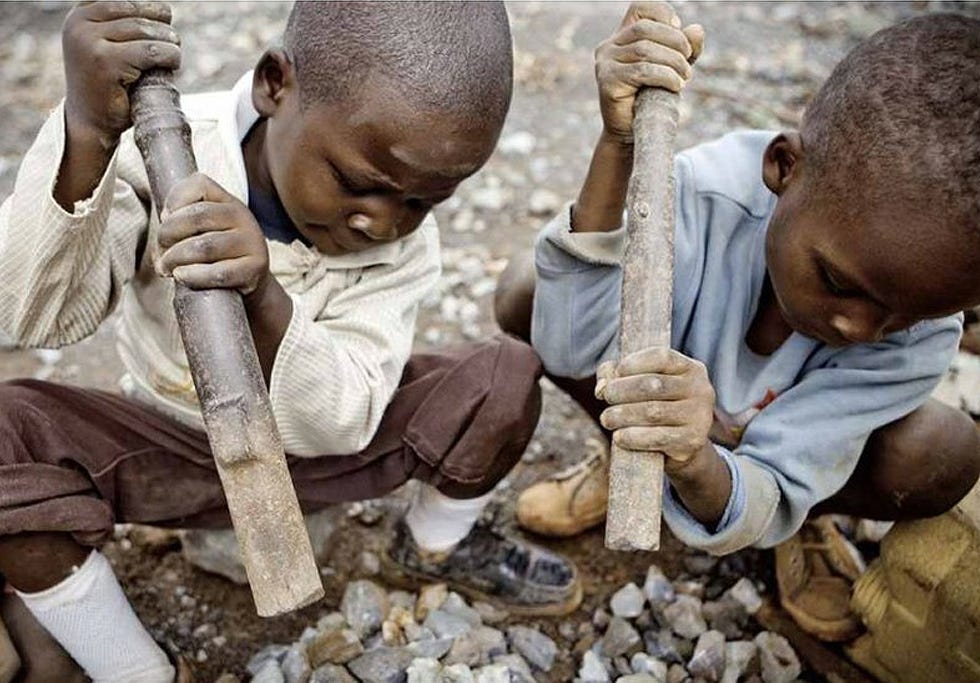
Wow I will probably cross post this. You sure are speaking my language! It shocks me how few people are making these basic existential connections that seem so blatantly obvious and so obviously crucial. The Buffalo!
Traditiuonal Ecological Knowledge is what provided for the vastness of human adaptation throughout the world. I have worked just a handful of times with Ali Meders-Knight who is bringing back traditional fire management practices to northern California, and I seriously learned more in one day with her than in two permaculture design courses and years of trying to implement the concepts. Permaculture takes such knowledge and generalizes it into principles that then get taught on an abstract level and takes years to sort out. In TEK, you gather in a group and do a couple of fun simple things together, and you realize you have just demonstrated 15 permaculture principles and stacked a hundred functions with tangible results like helping an edible landscape regenerate from nearly barren rocks.
The diversity of experiences I have had with indigenous ceremonies also testify to the vast wisdom of traditional cultures in allowing for manifestations of healing that a western mind would have a hard time imagining. Rain dances, or Curings as they are known, are no joke, and are but one example of what is possible through group intention and prayer, rhythm, drum, dance of bare feet on the Earth, and I don't even know what - staying true to ancient ways of managing self-organizing systems of energy flow and resonant field generation?
What I do know is that there were some 500 nations here each with their own particular medicine ways, and those I have been involved with taught me more than all my church days about what it truly means to be human on this Earth. And these ways have not been lost - they have been heroically preserved throughout generations of genocidal pressures also beyond most westerners imaginations. These technologies if you can call them that, including TEK, are in my mind our best hope for regnerating the Web of Life from the poisoned nub it is being brought down to. The only other thing I would add is in line with the major other point of your essay and that is befriending the other relations and their wisdom on this Earth, the power of our many relations in animal, plant, microbiota, and especially the fungi kingdom who were found even surviving inside the destroyed Chernobyl reactor. They will surely be our allies in regenrating living ecosystems as they were so central in past global extinctions when after 90+ percent of life was destroyed, they began again.
May we work together to pass something on to future generations. I just reached out to Lyla June Johnston, by the way, to thank her for her recent talk and offer whatever I might toward evolving of TEK networks forward. So yes, count me in, and shout it from the rooftops. I am an organic farmhand and local food donations organizer in rural Indiana, as well as a qigong teacher, bard, group facilitator, and so on. We are hosting a seed exchange this weekend - heirlooms encouraged! And if there are ways we might collaborate, let me know!
I have such a yearning for this kind of knowledge and ... life.
Thanks for this!
The buffalo slaughter makes me cry.